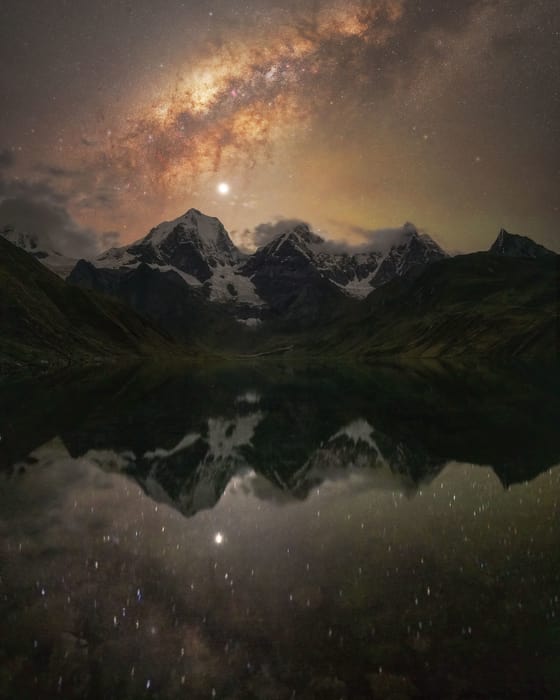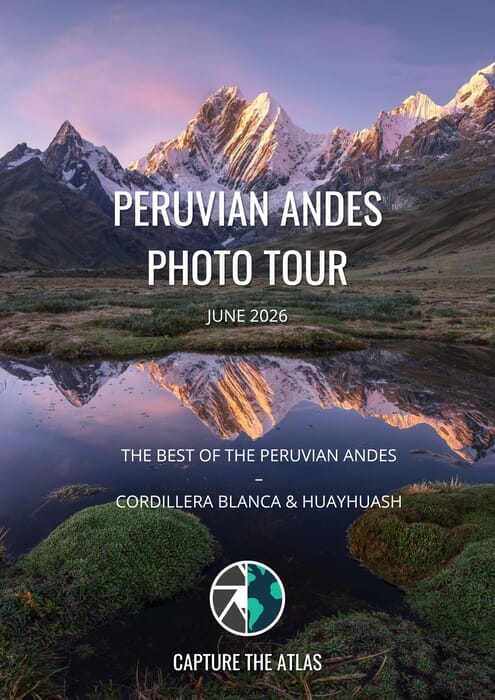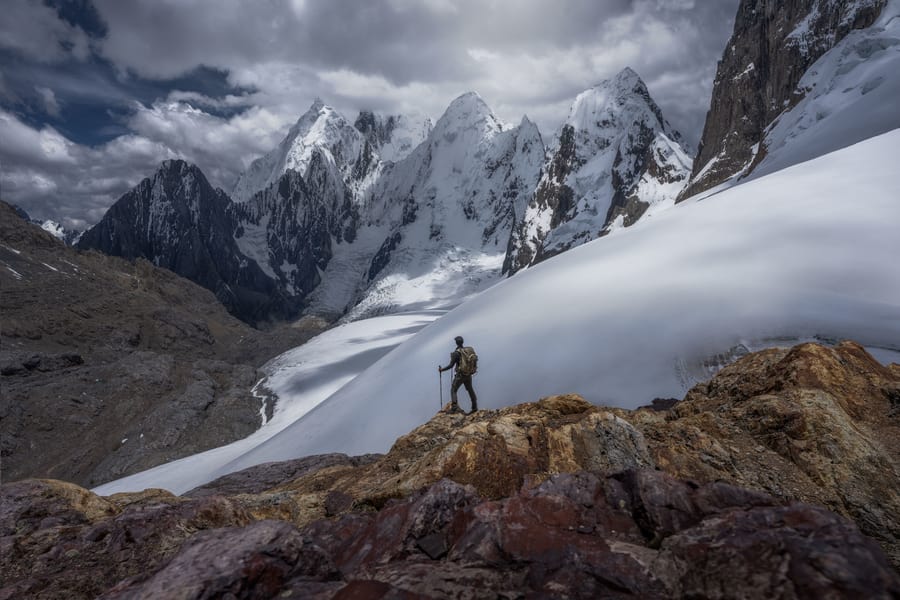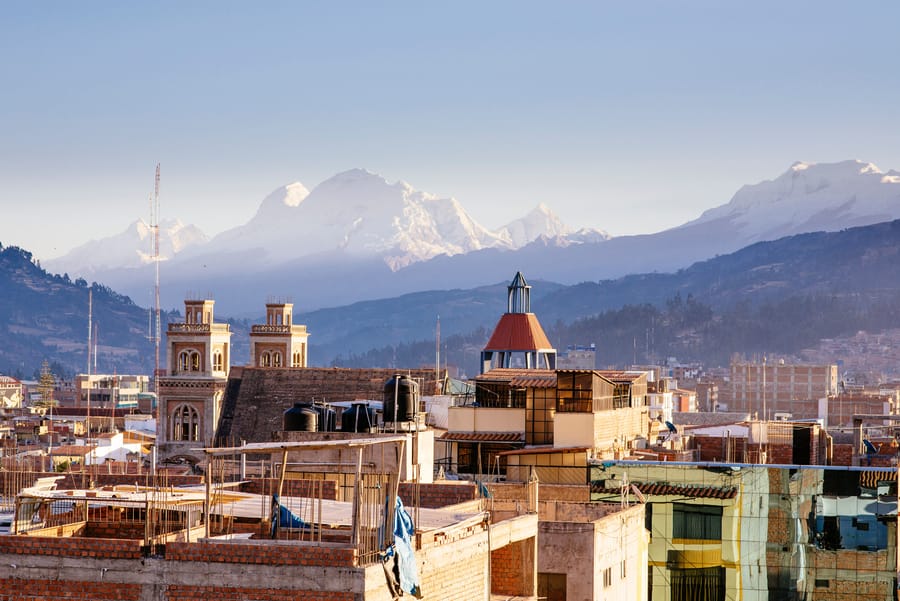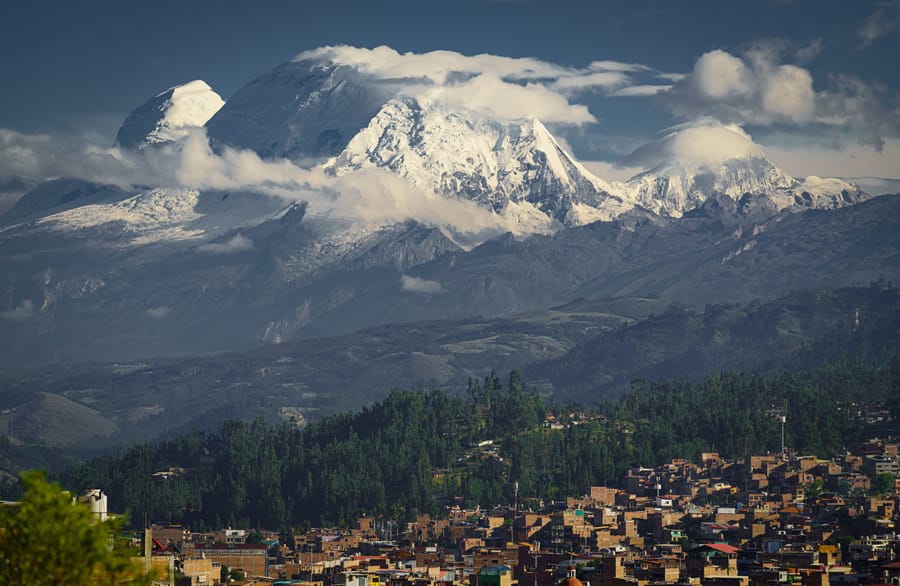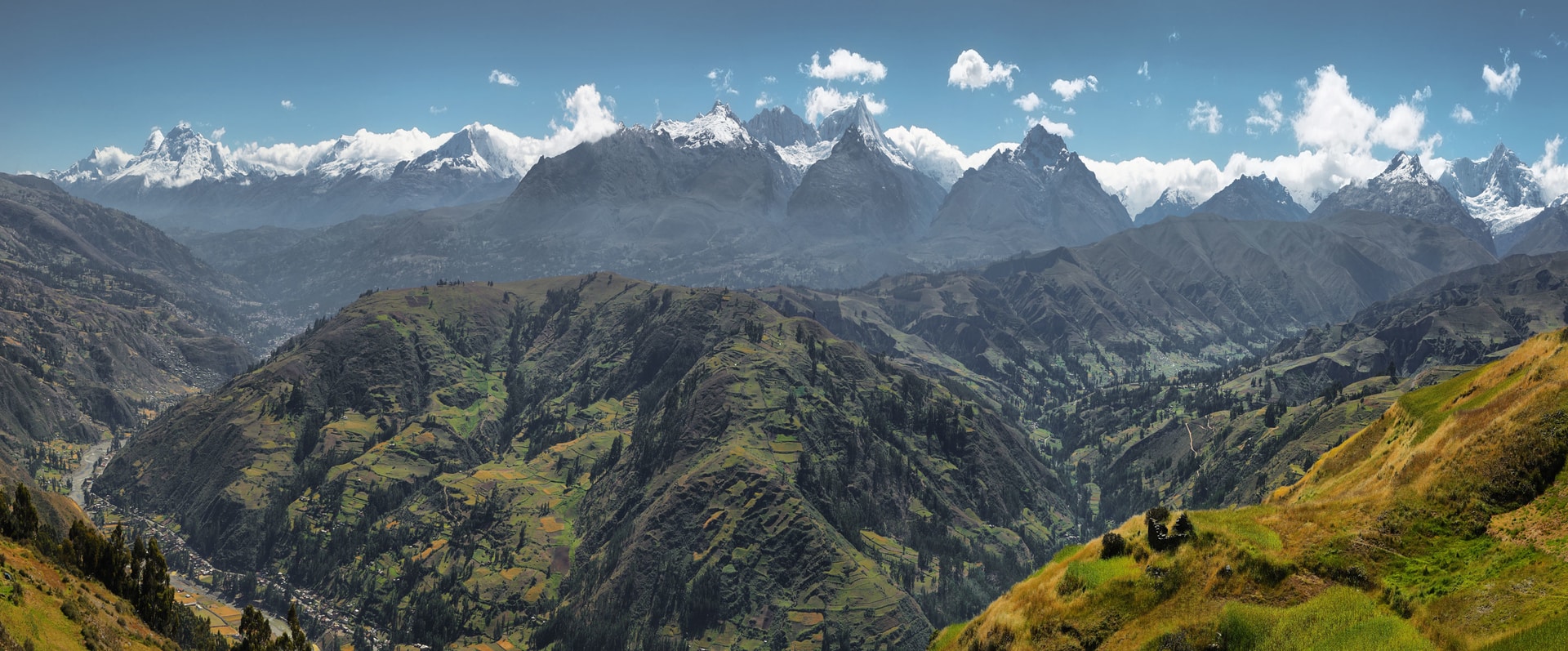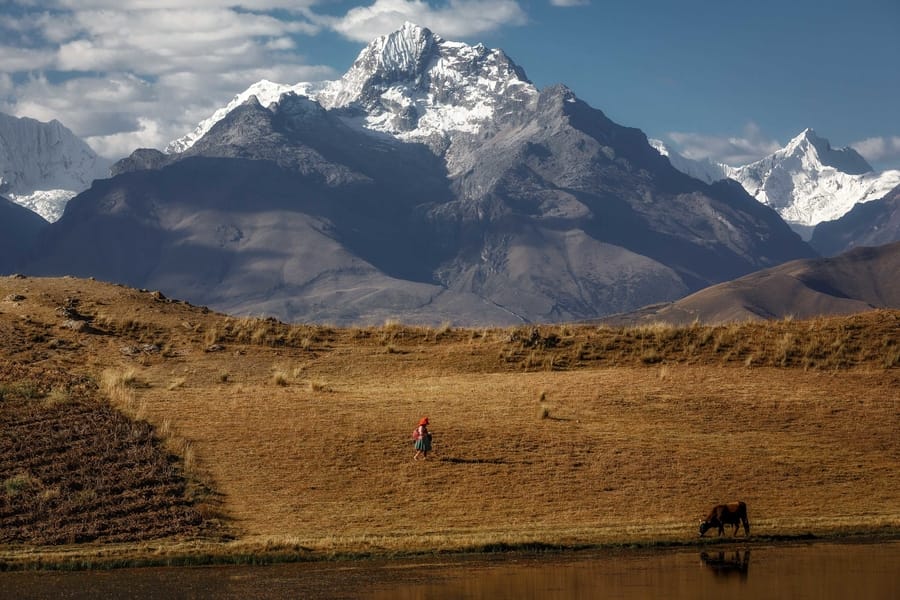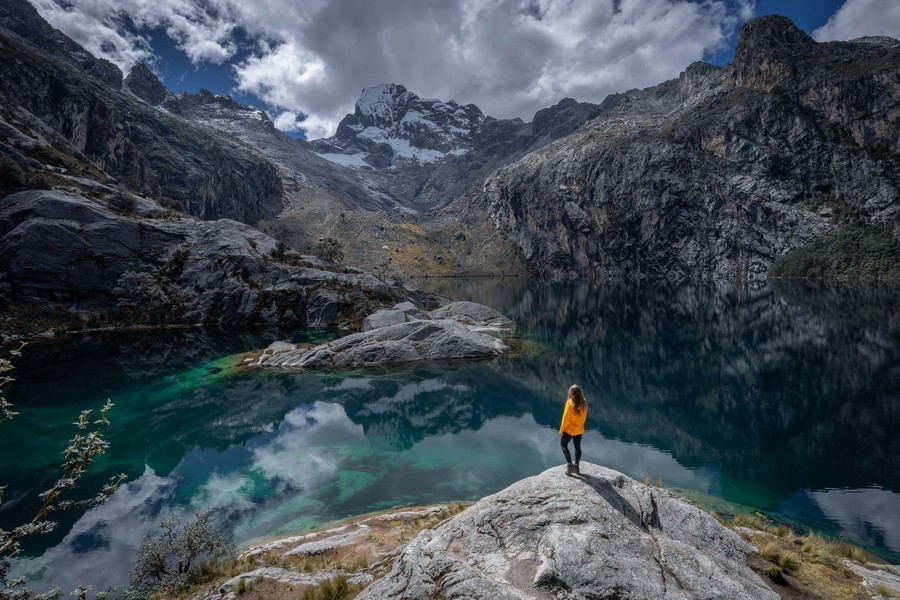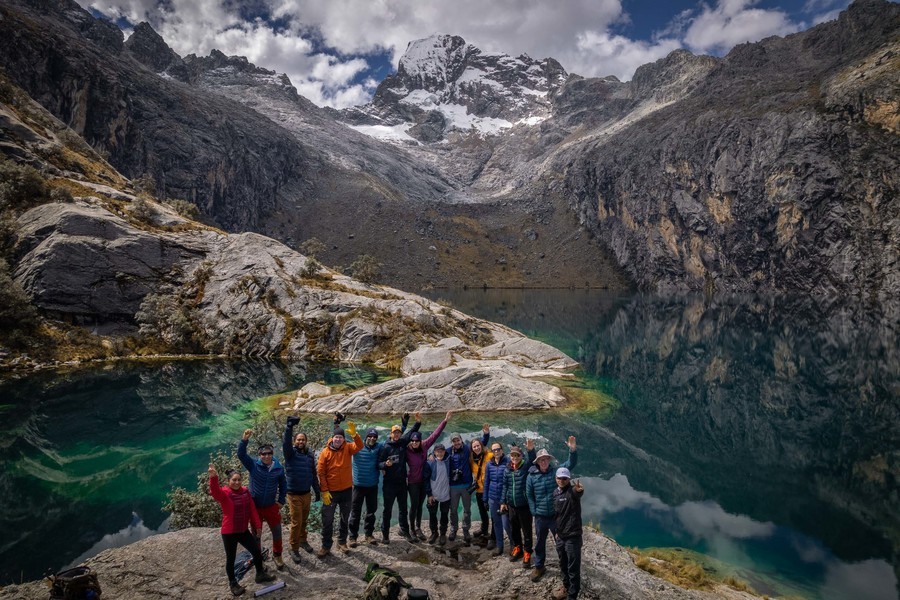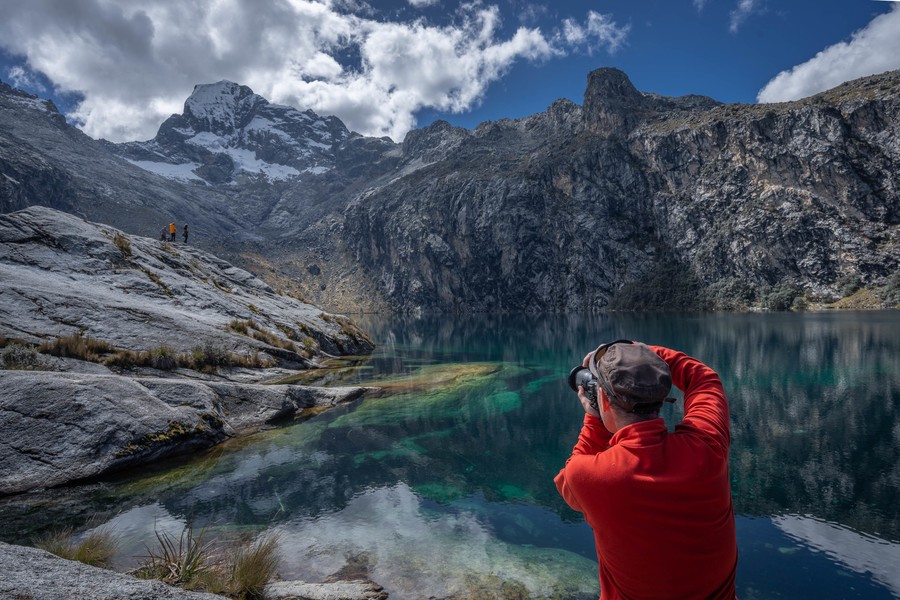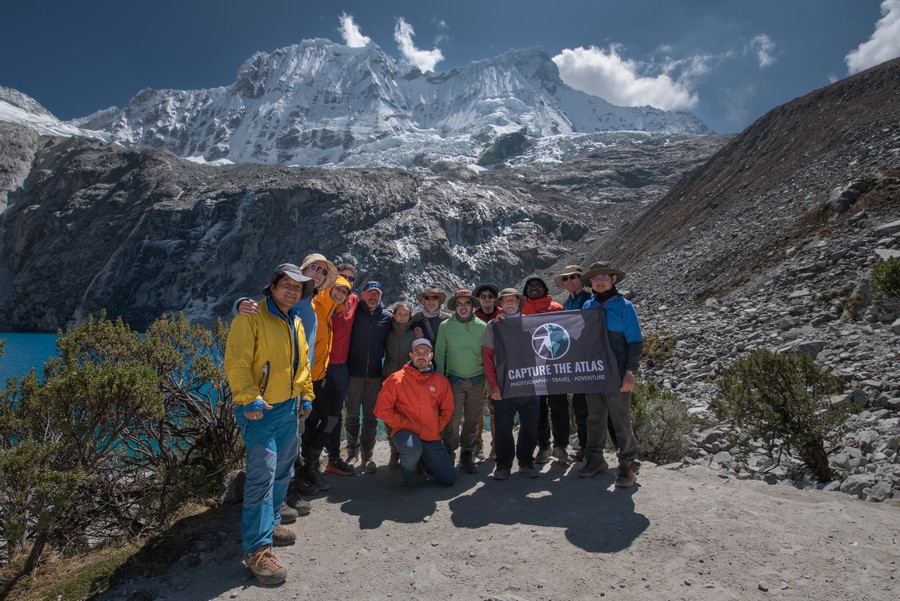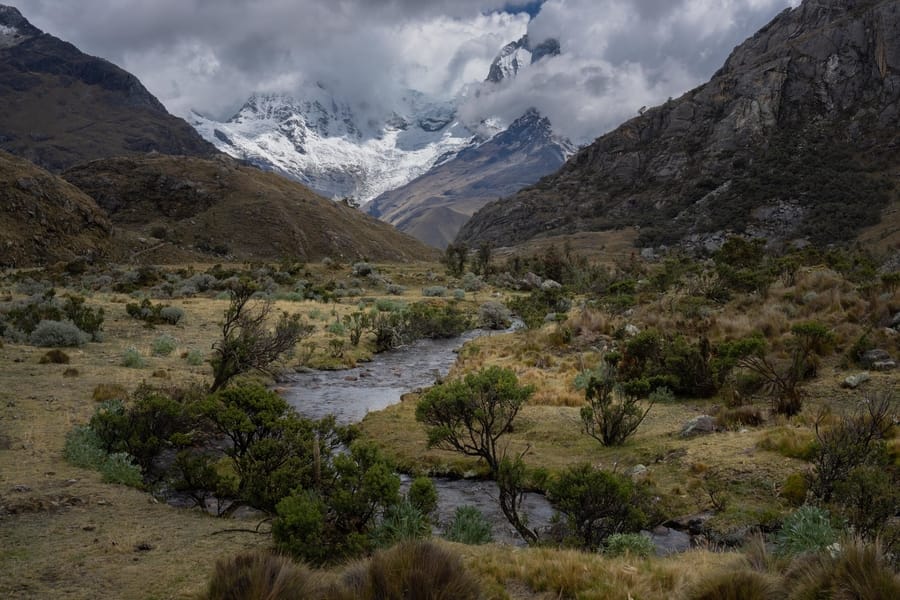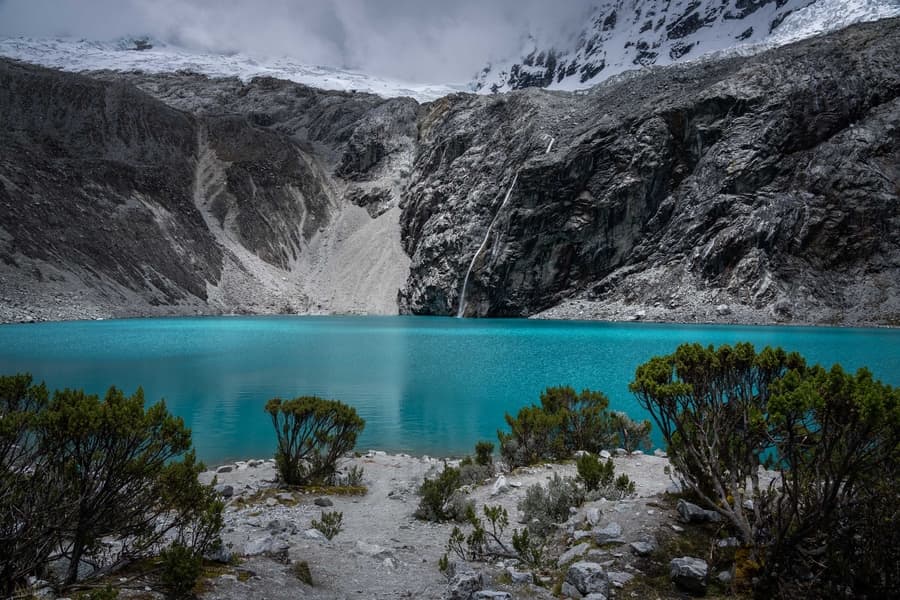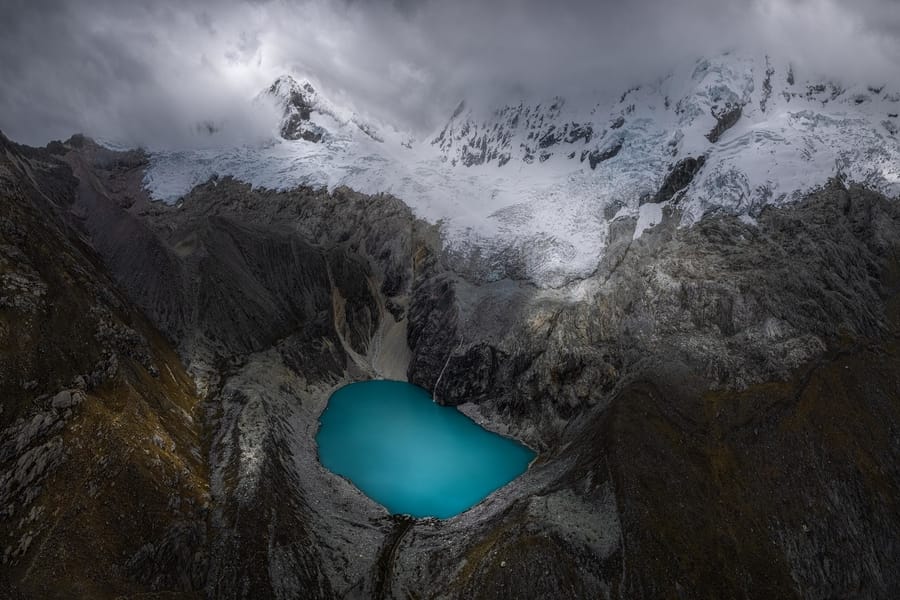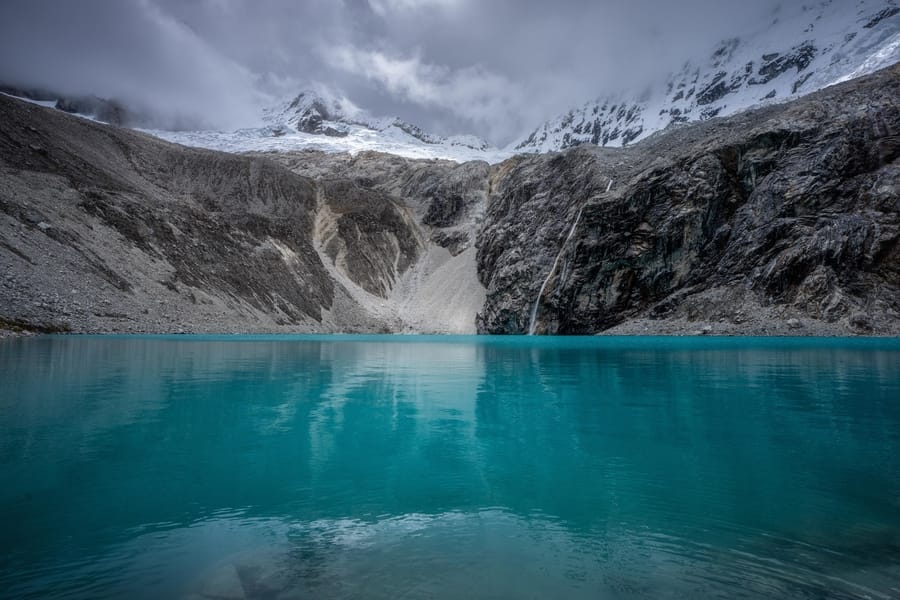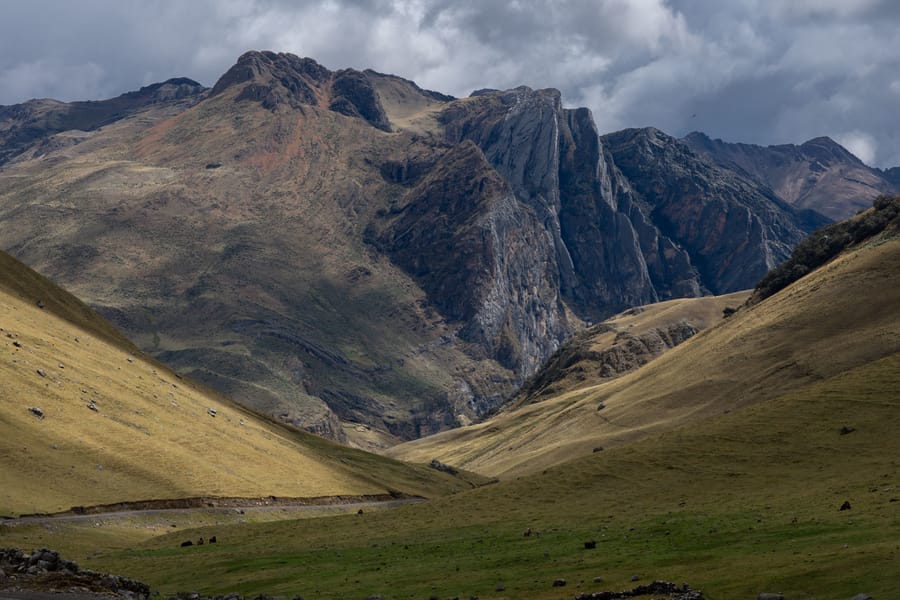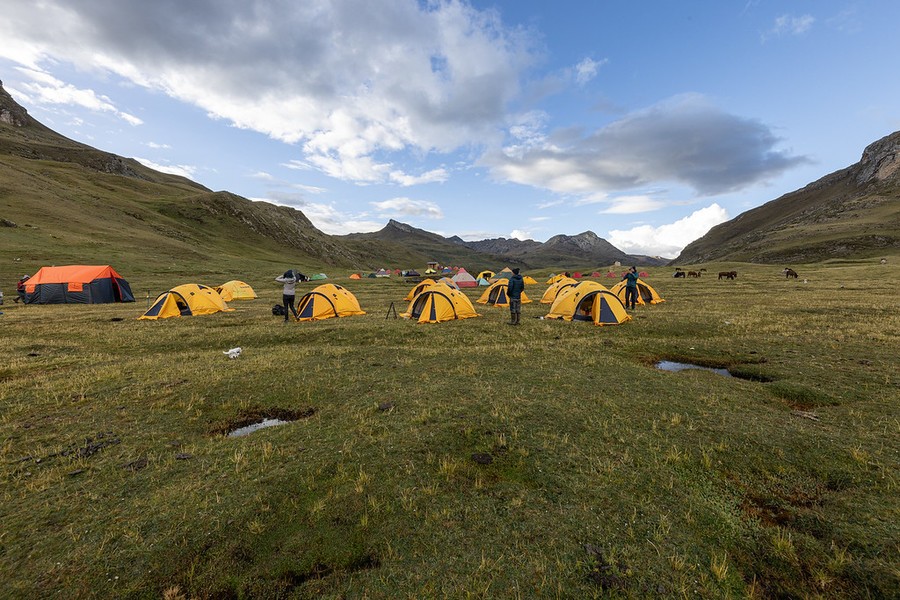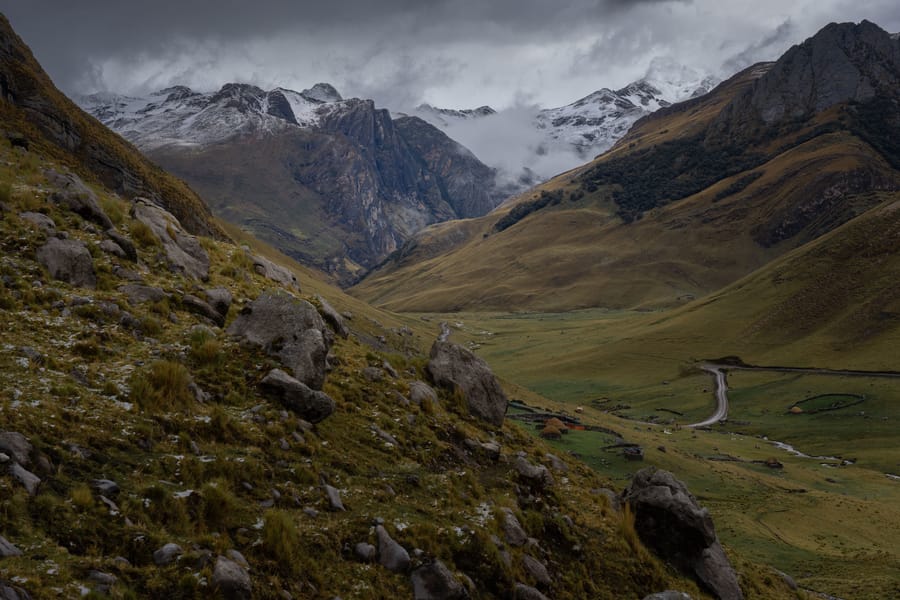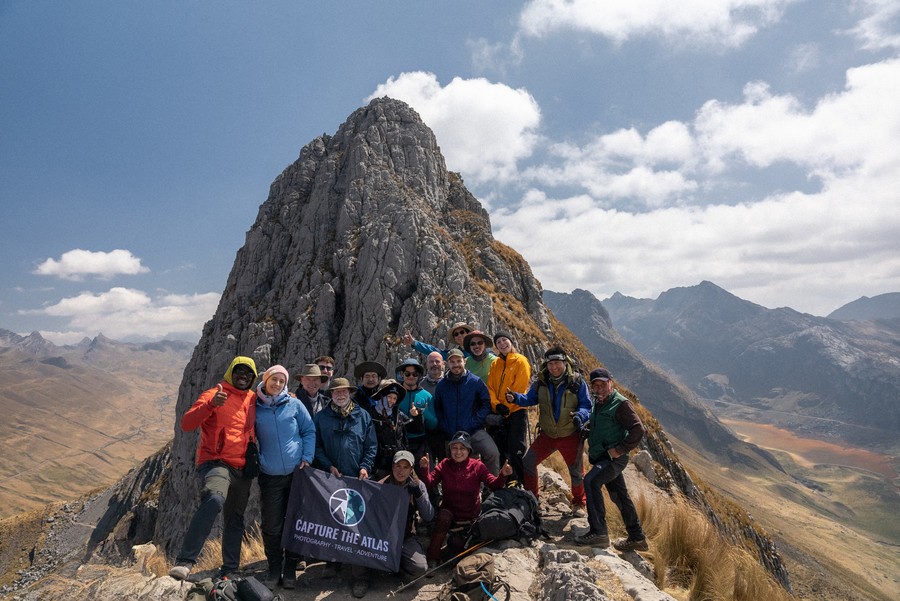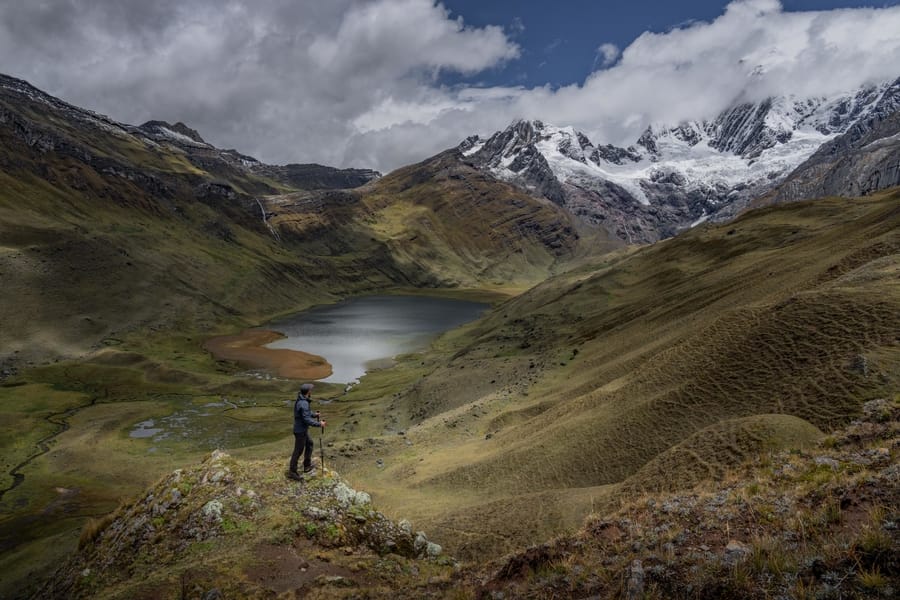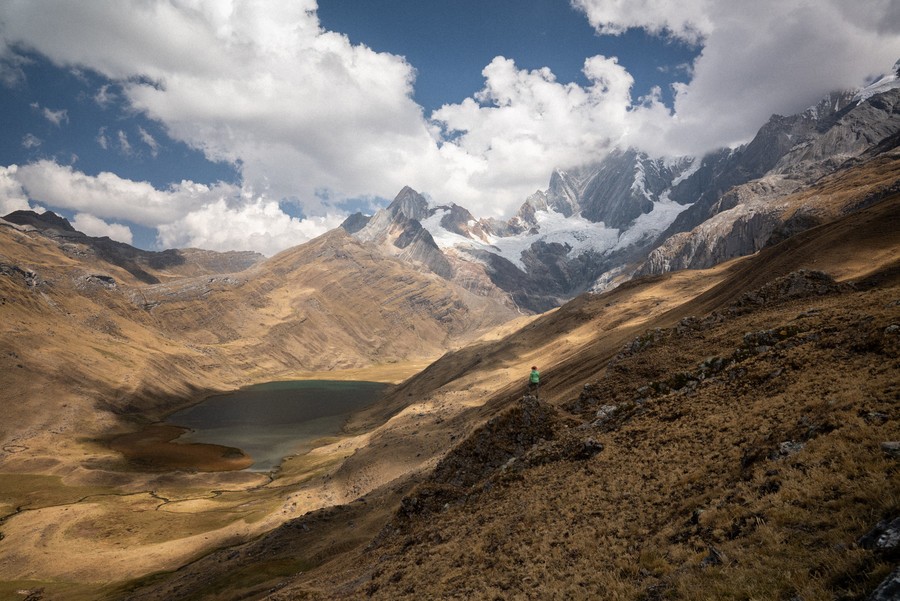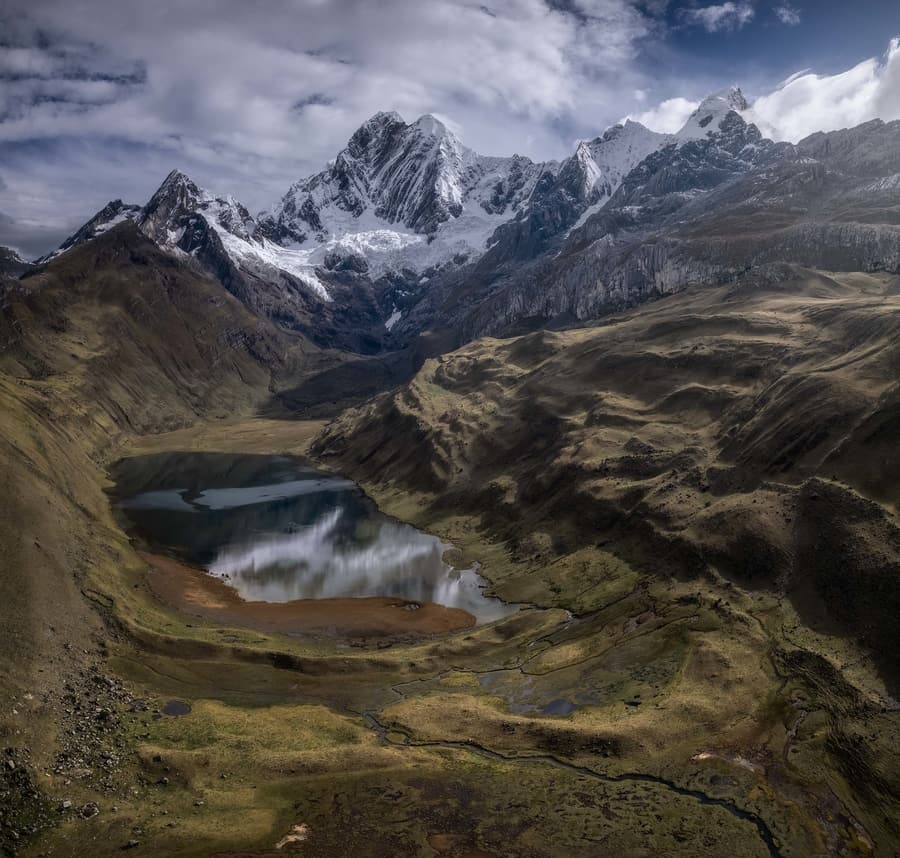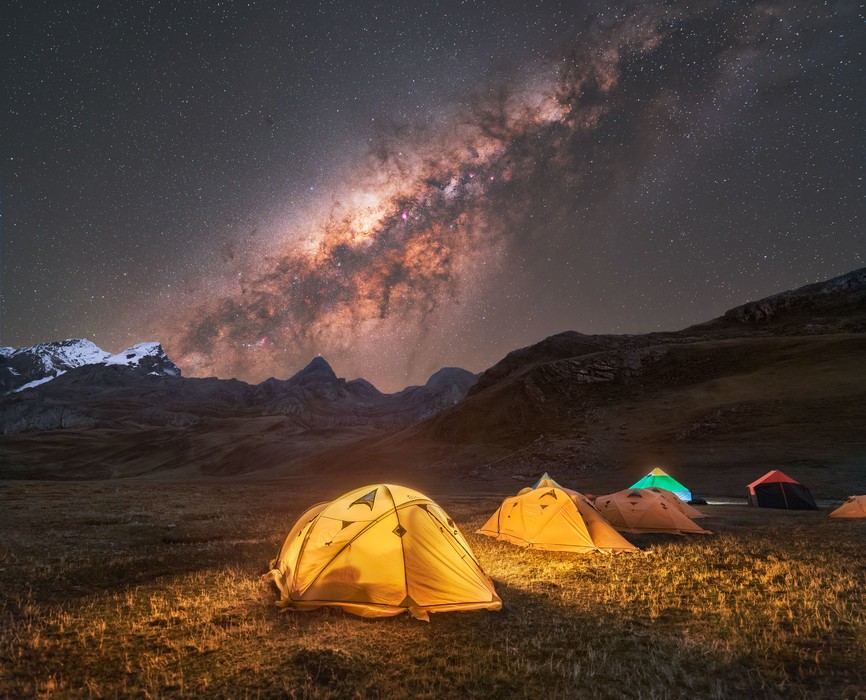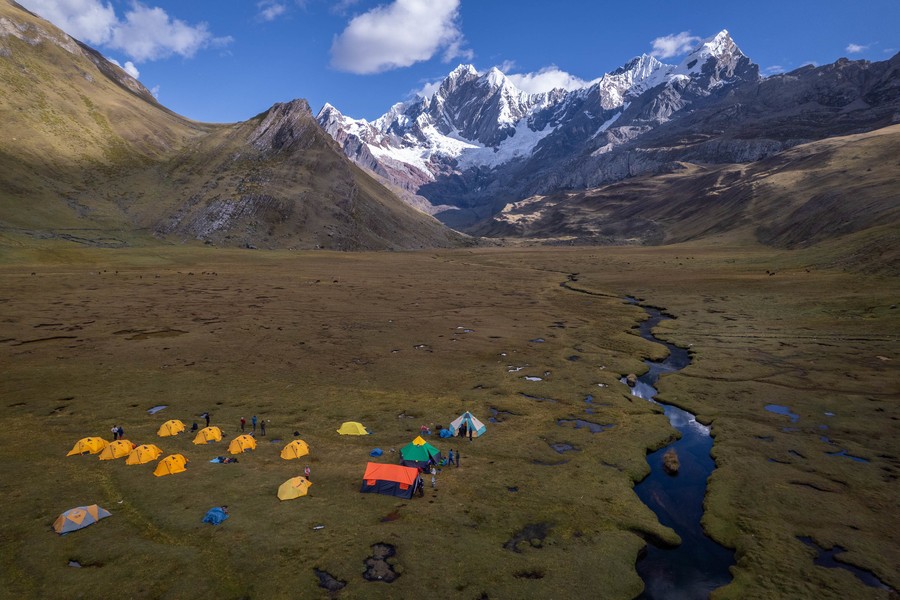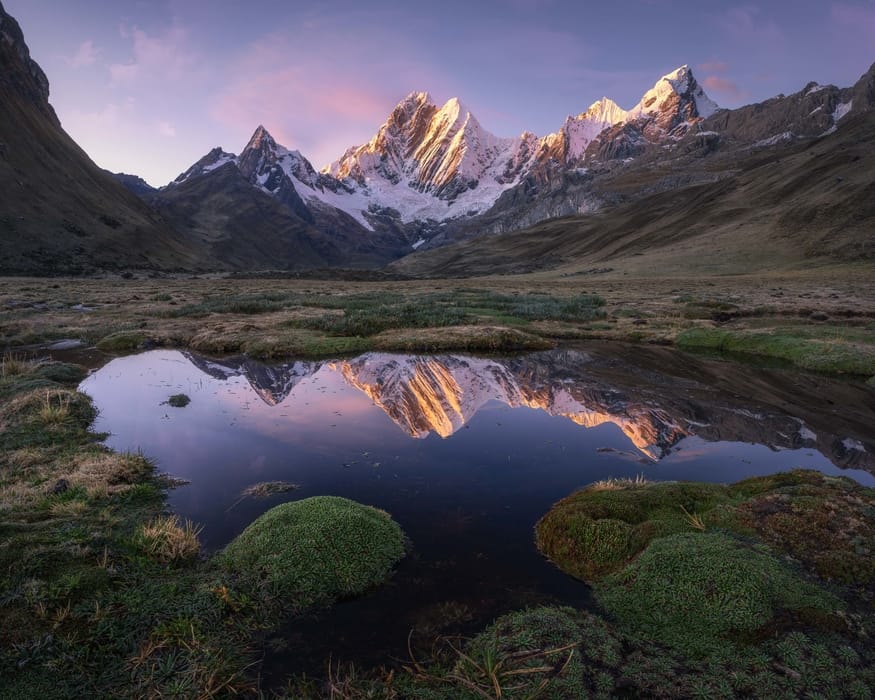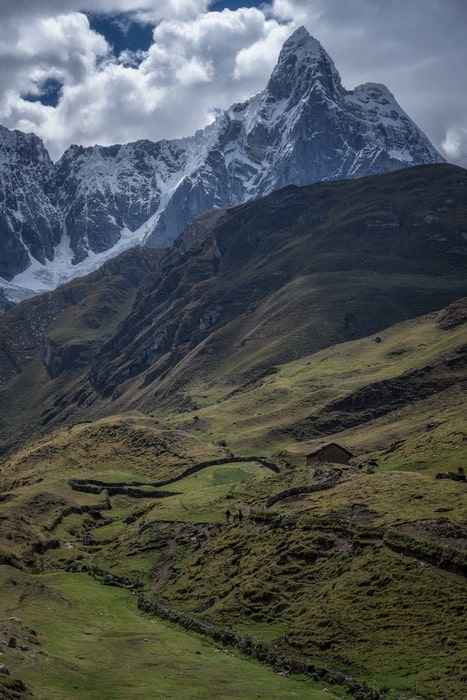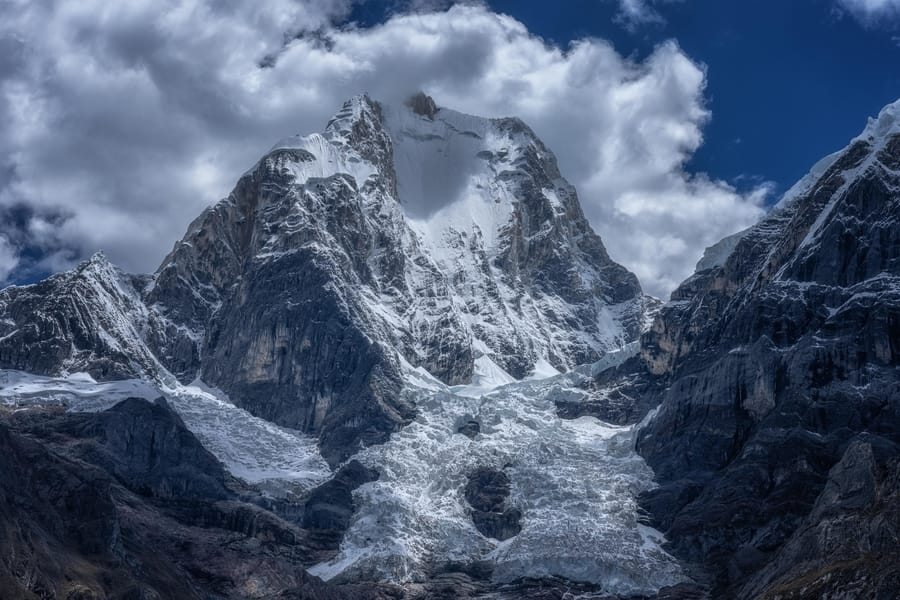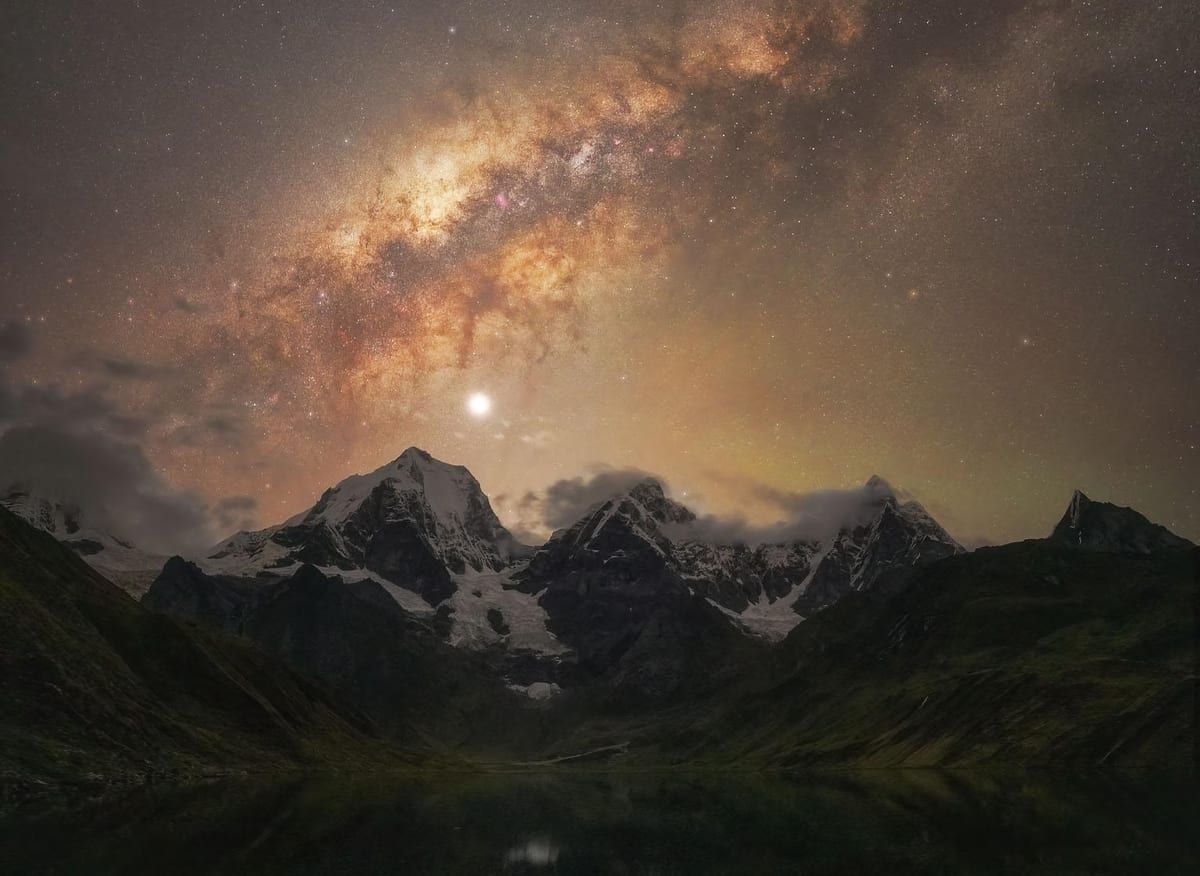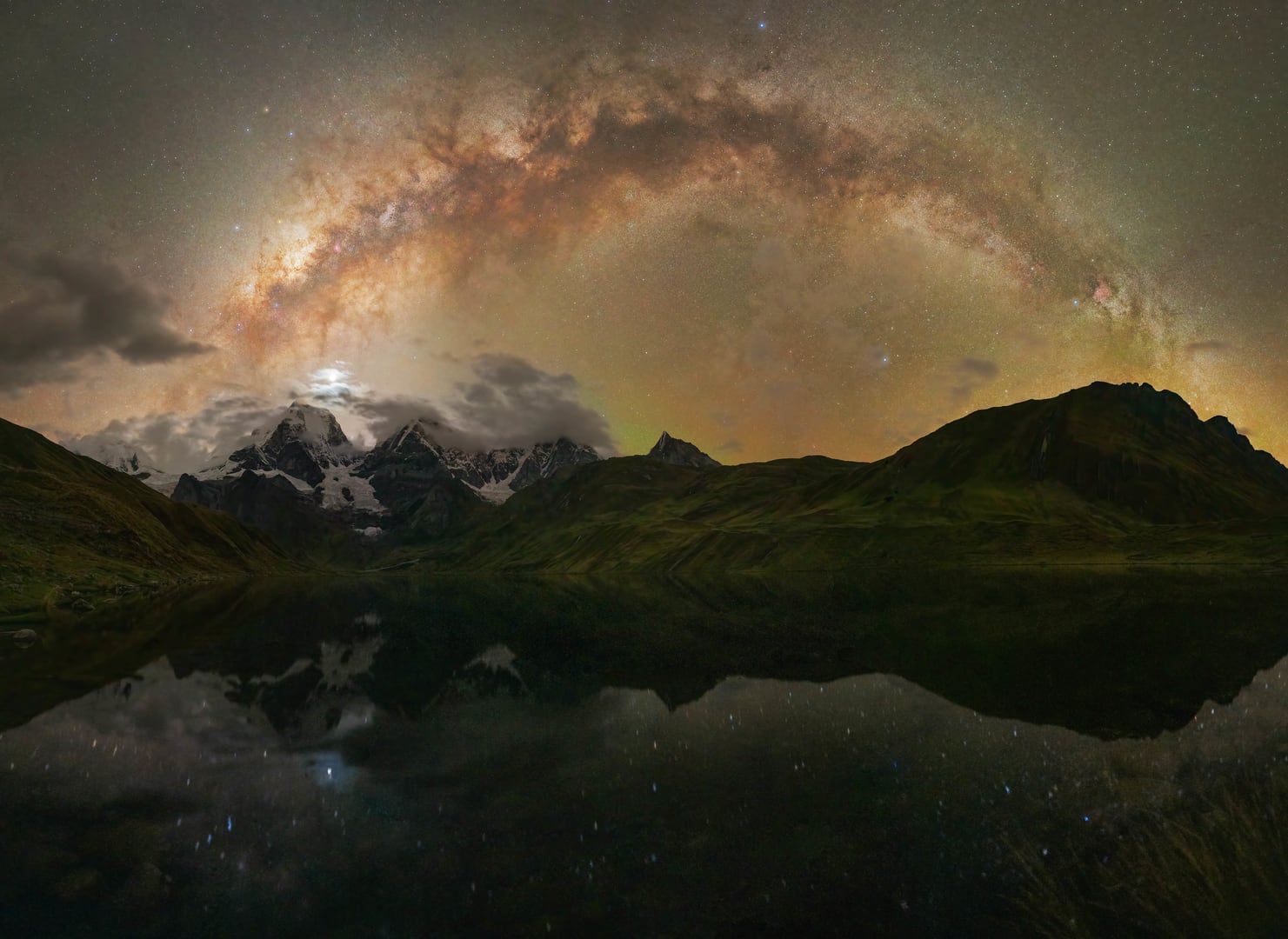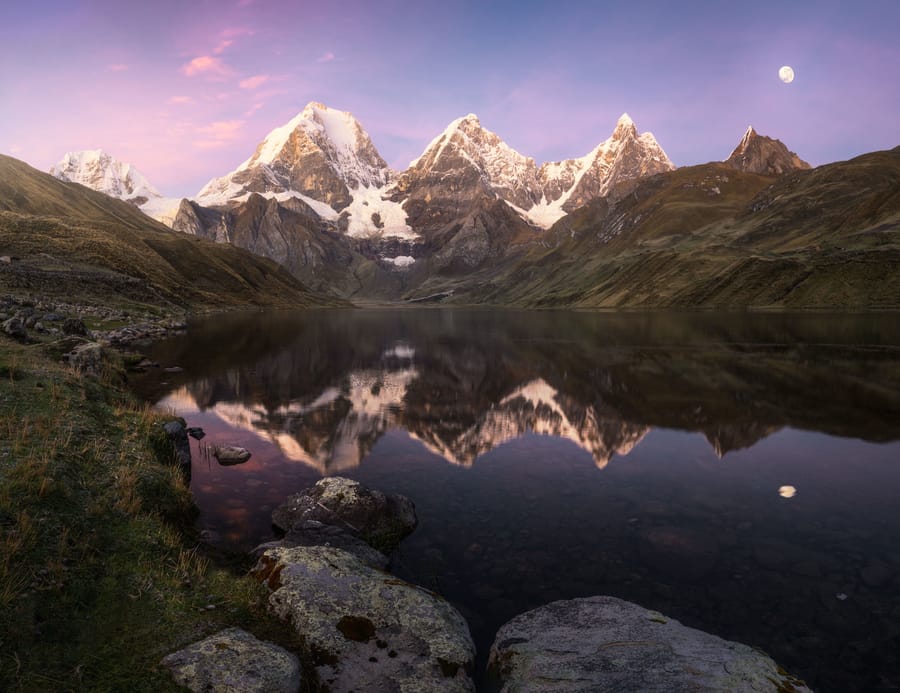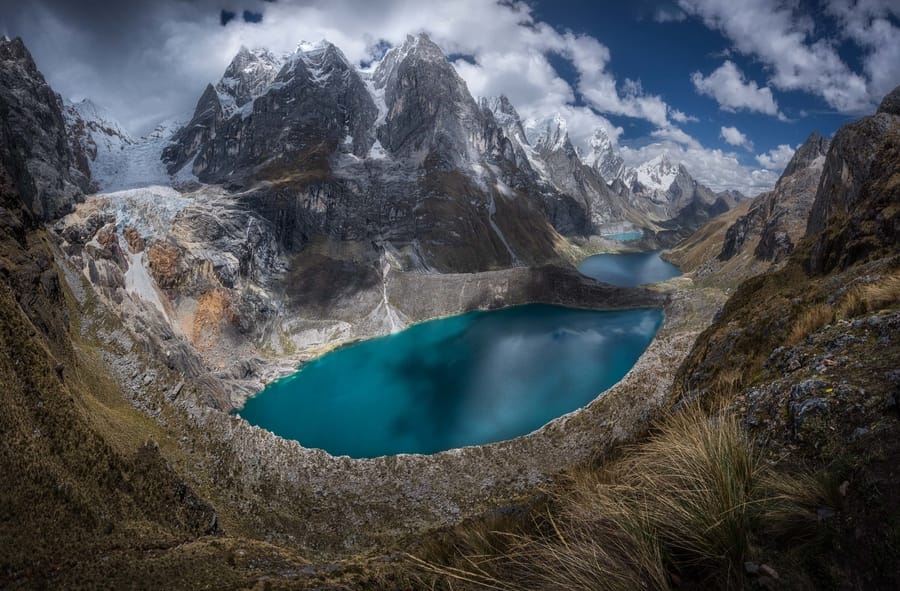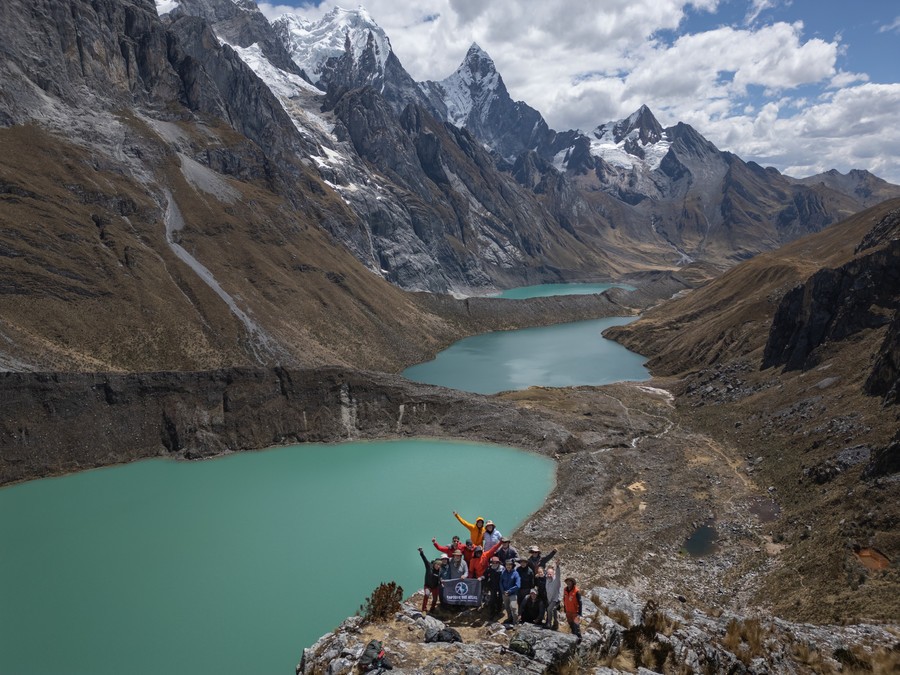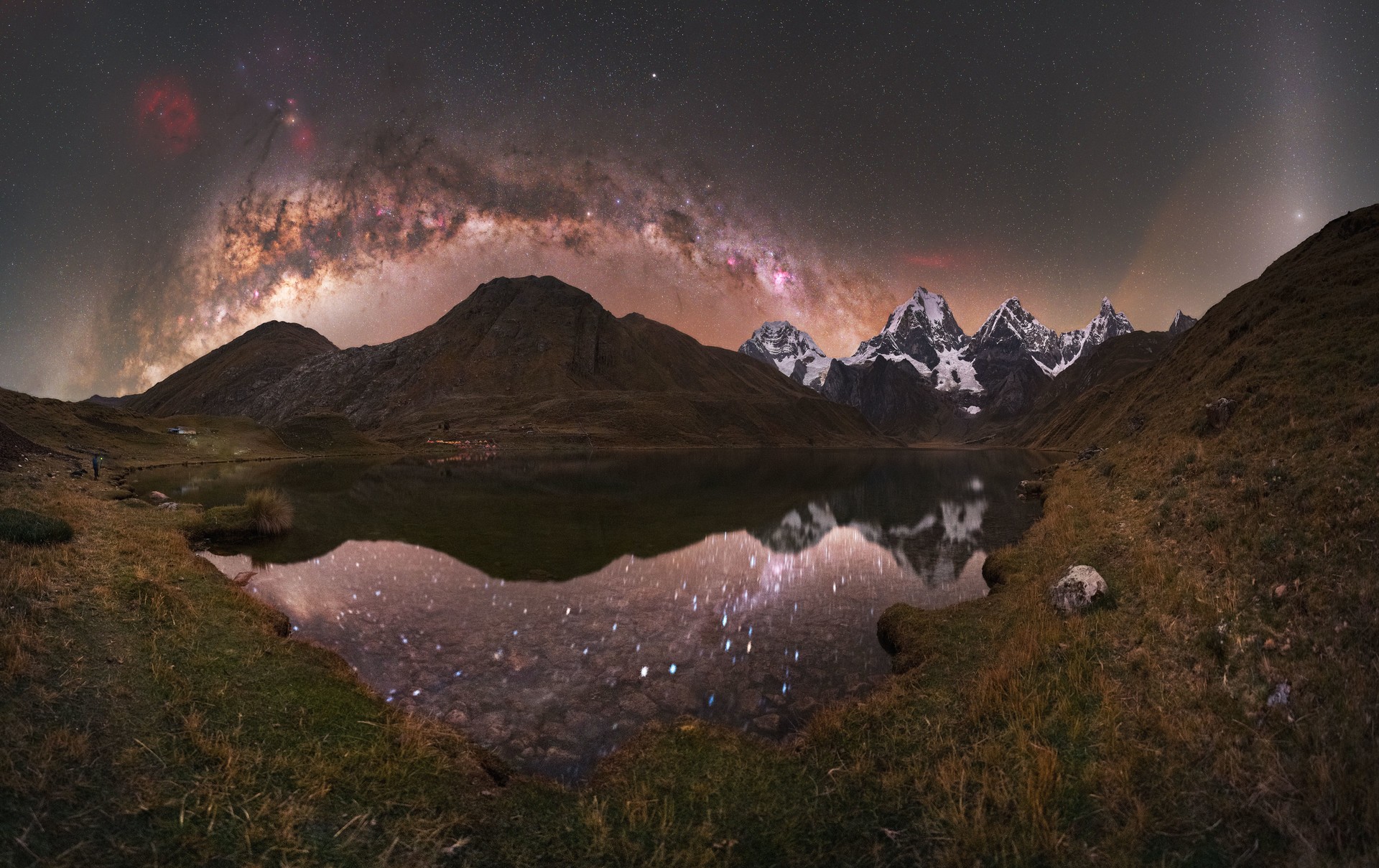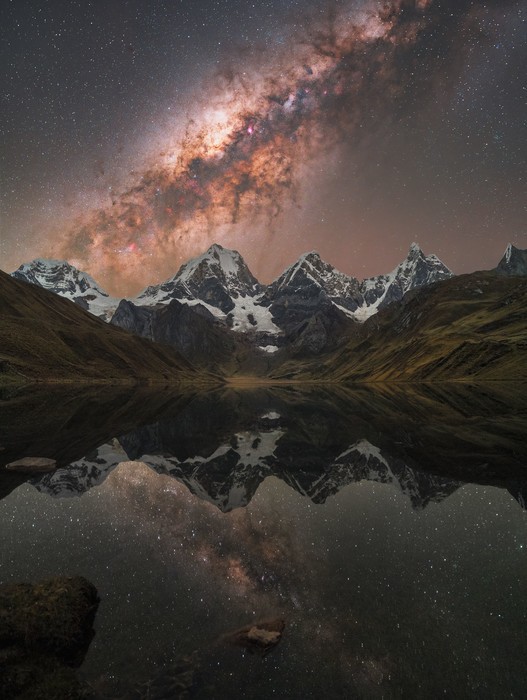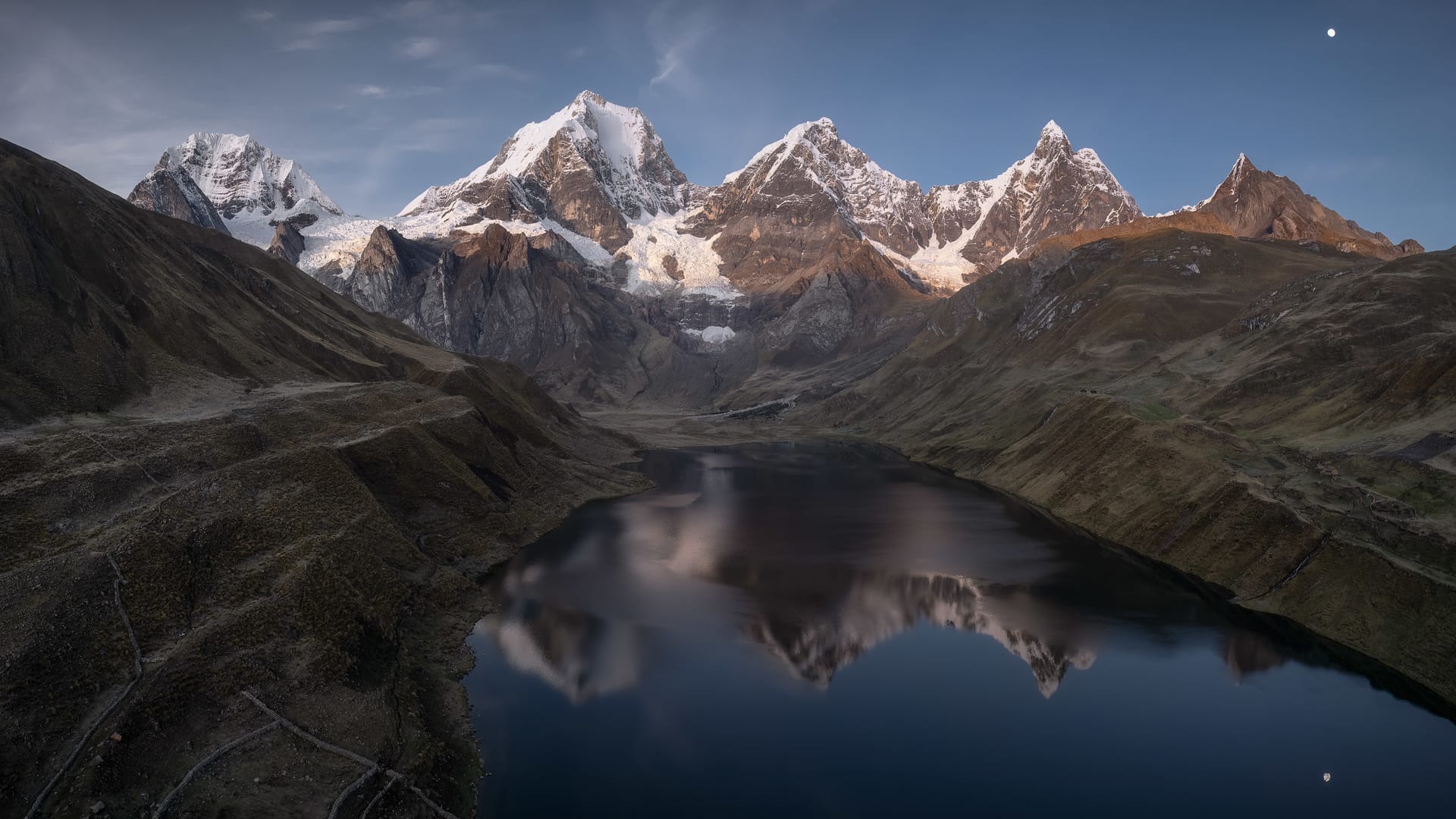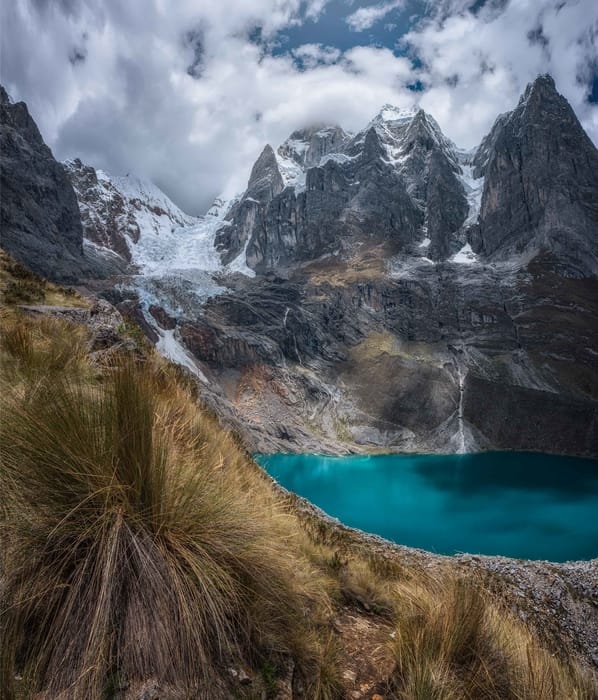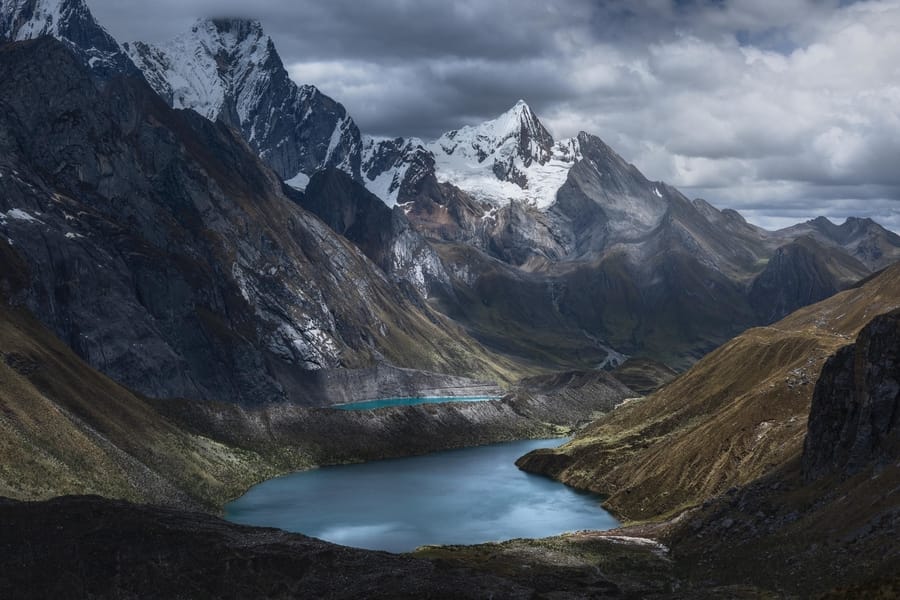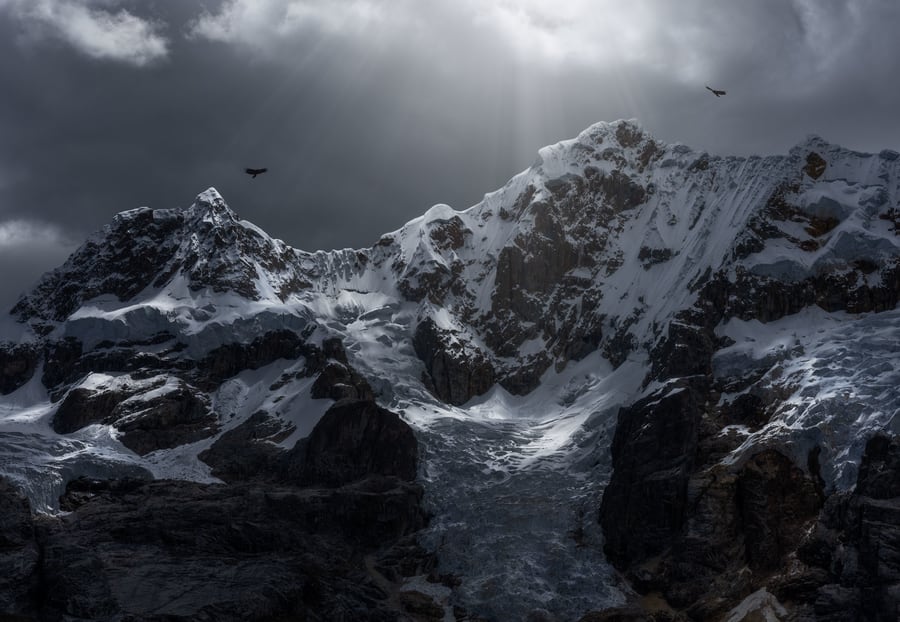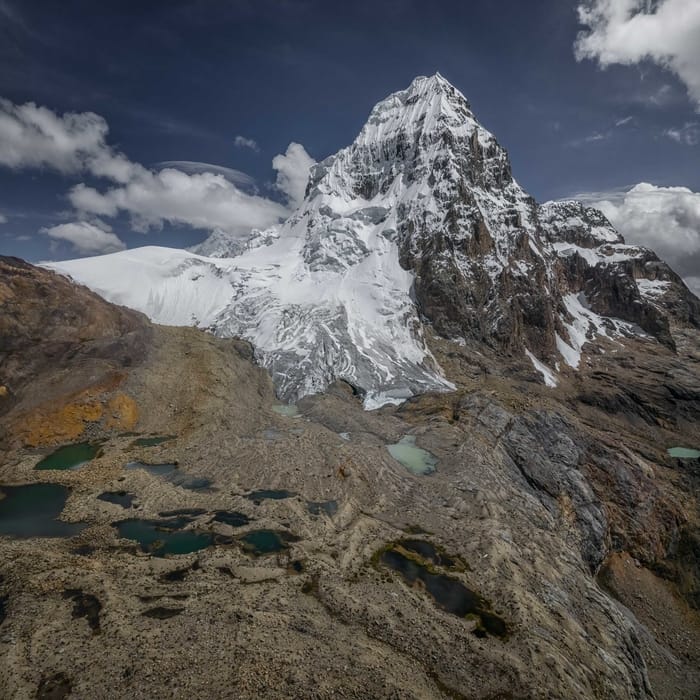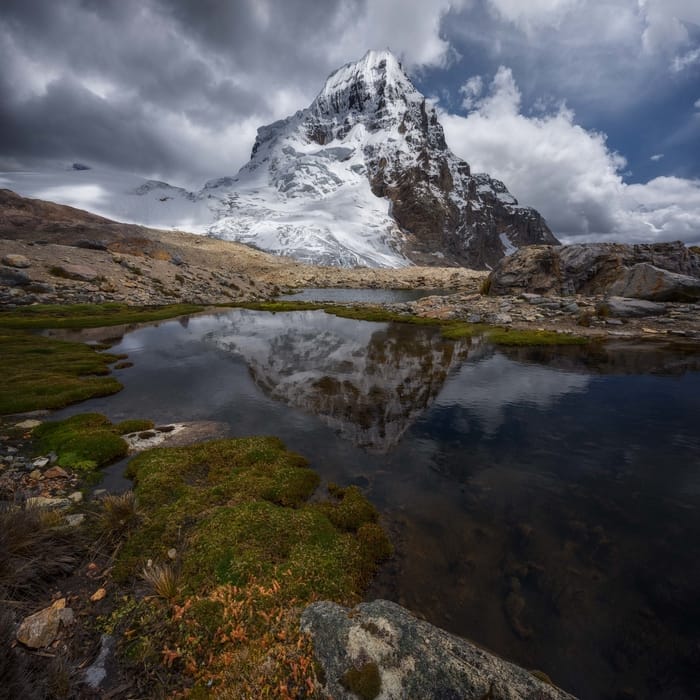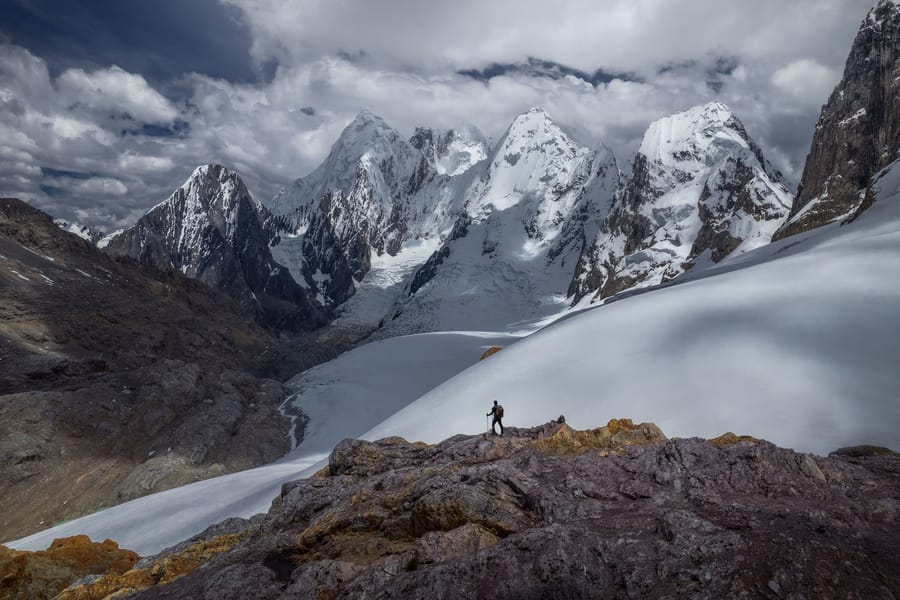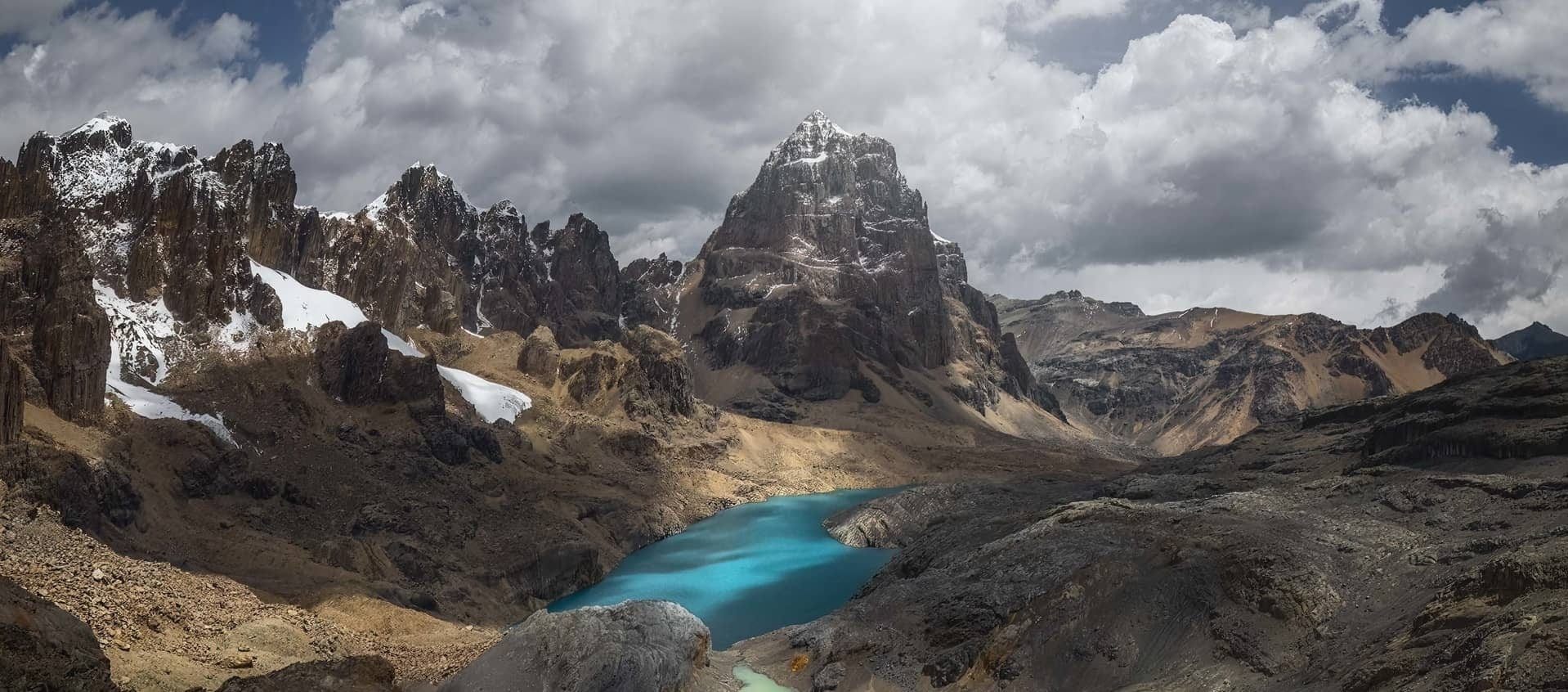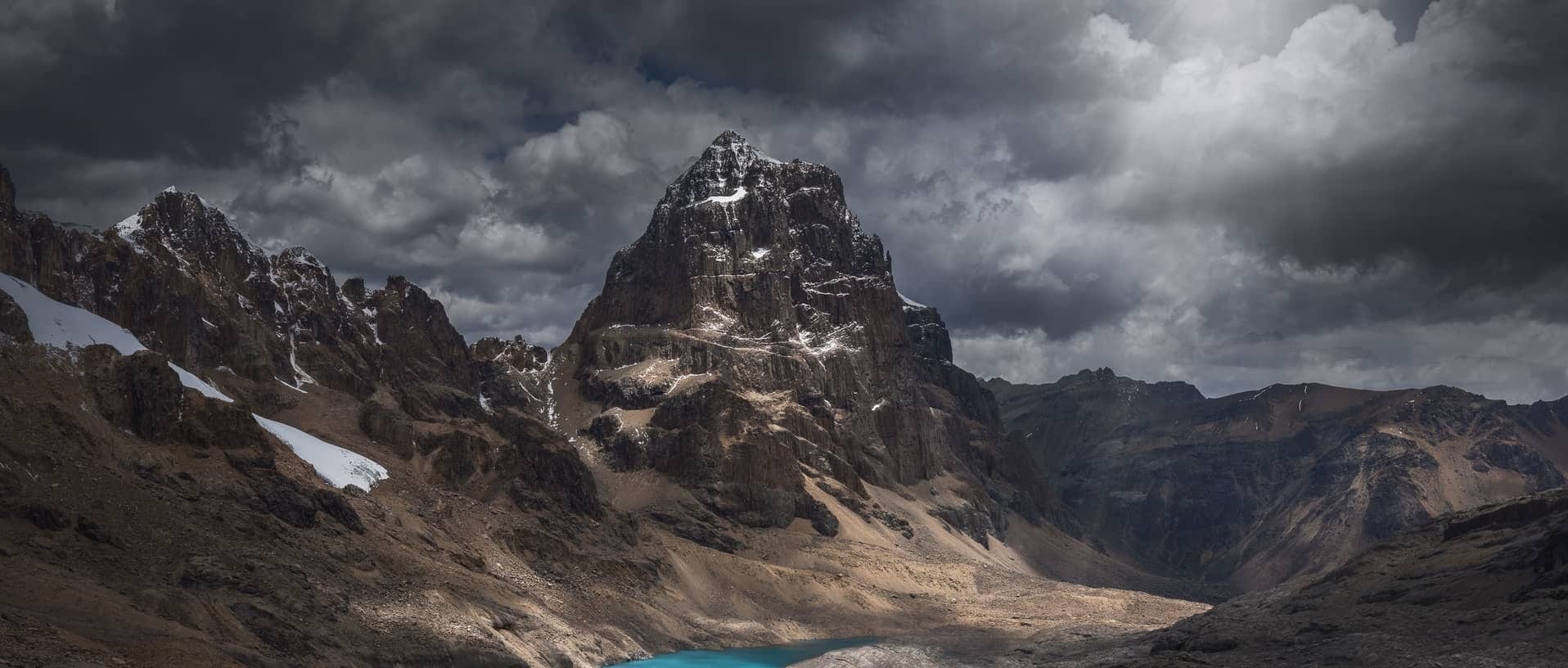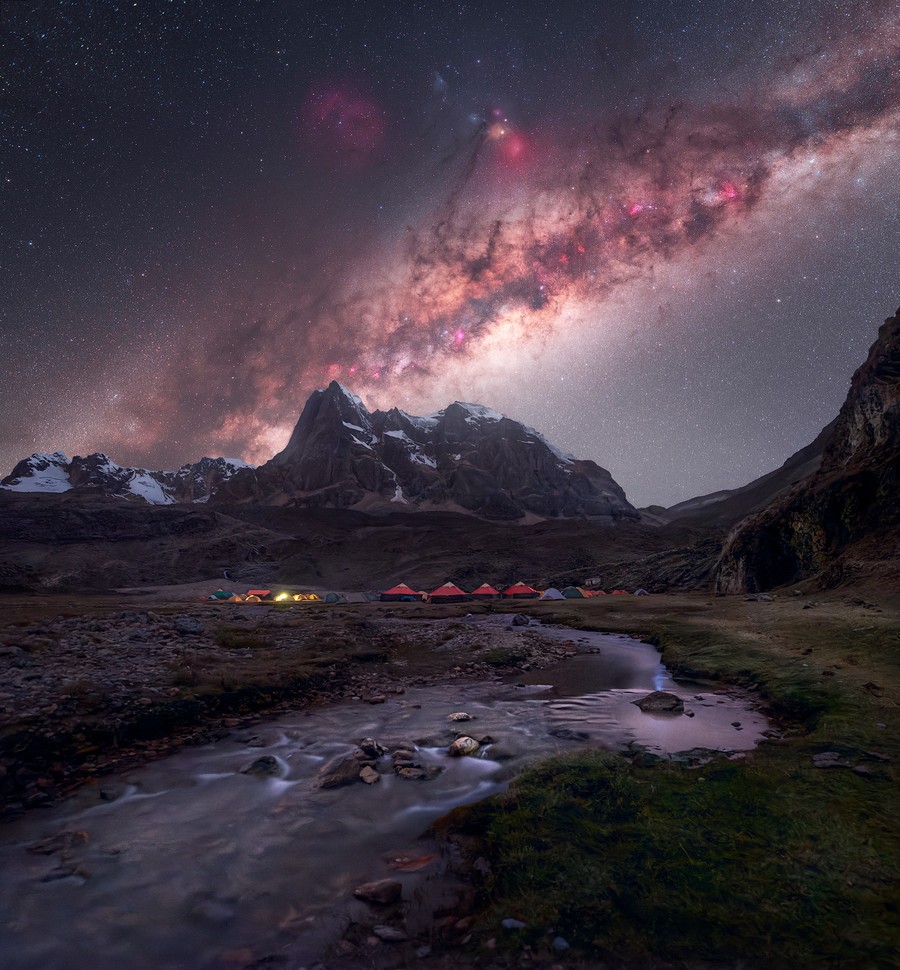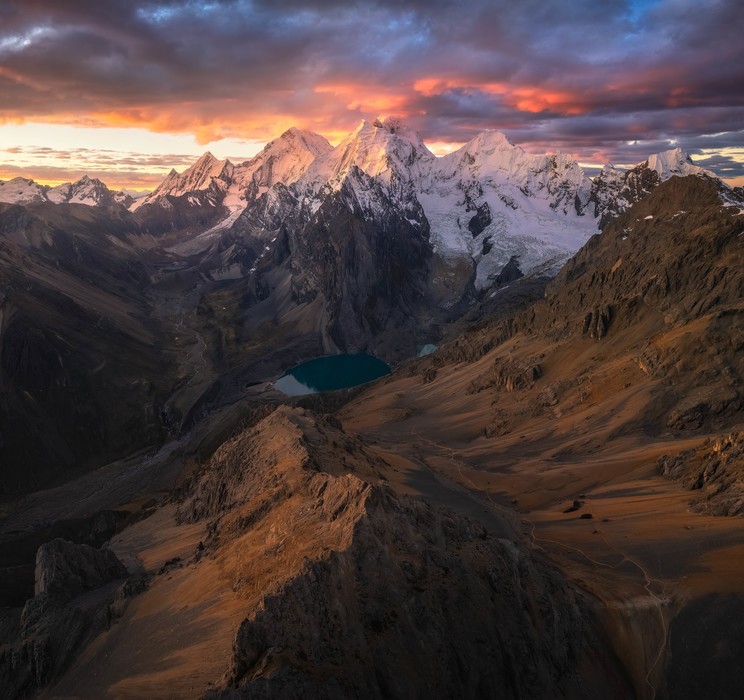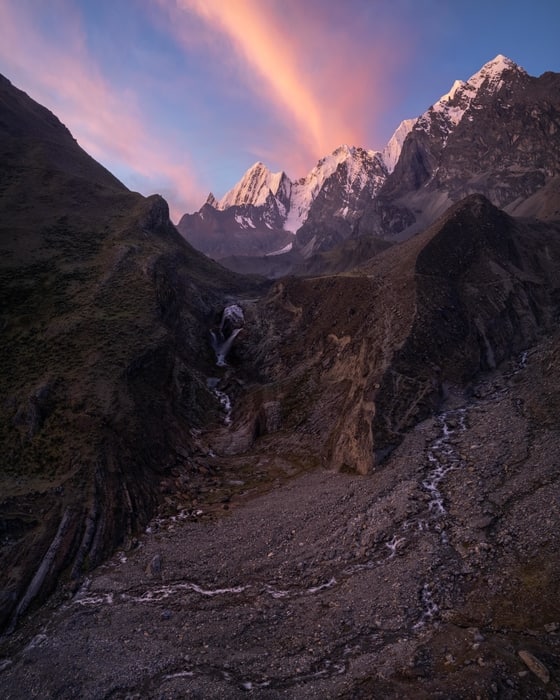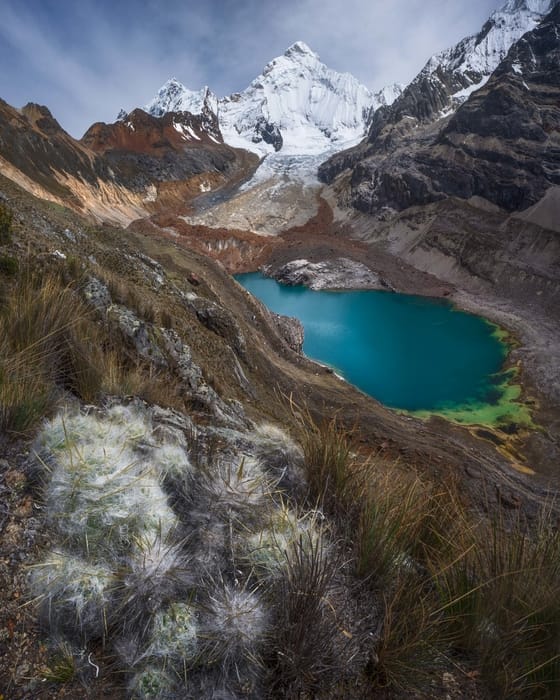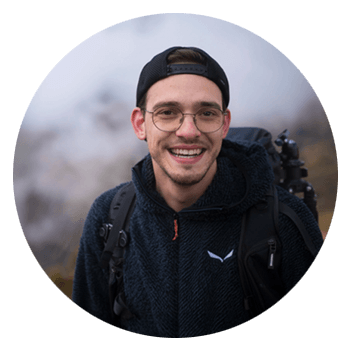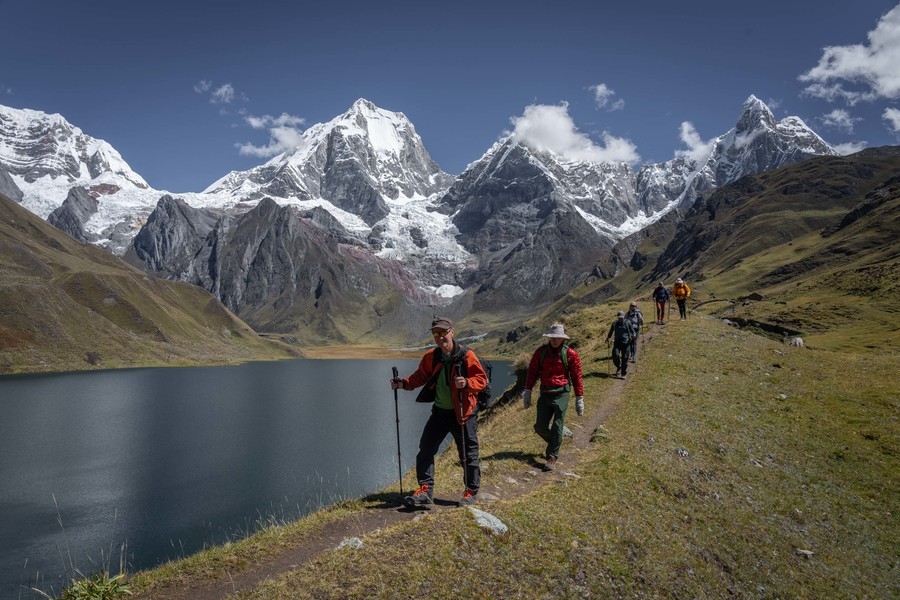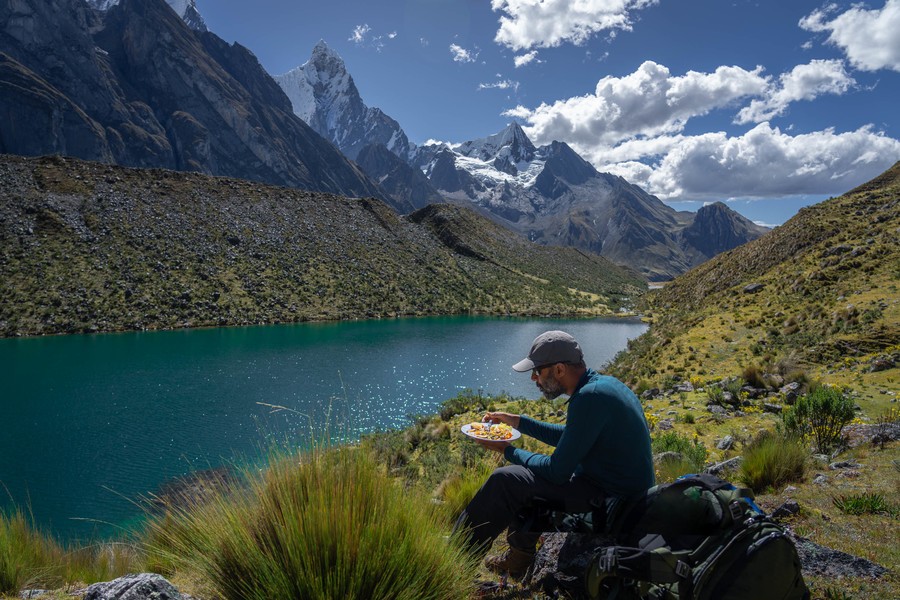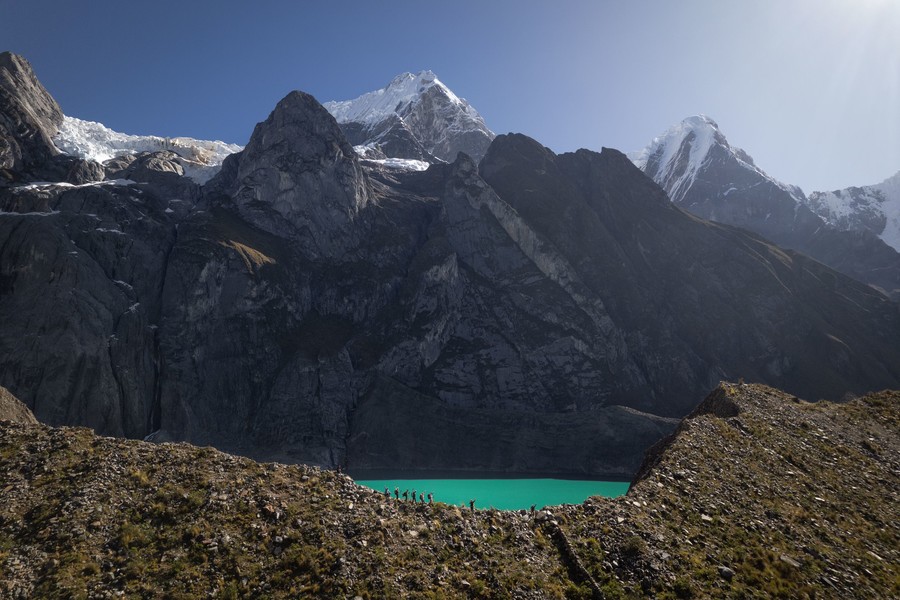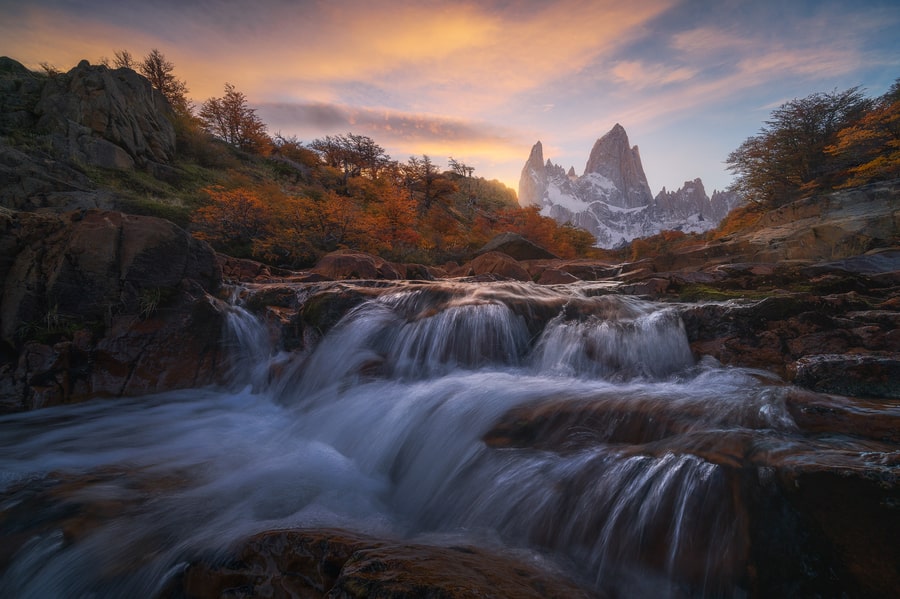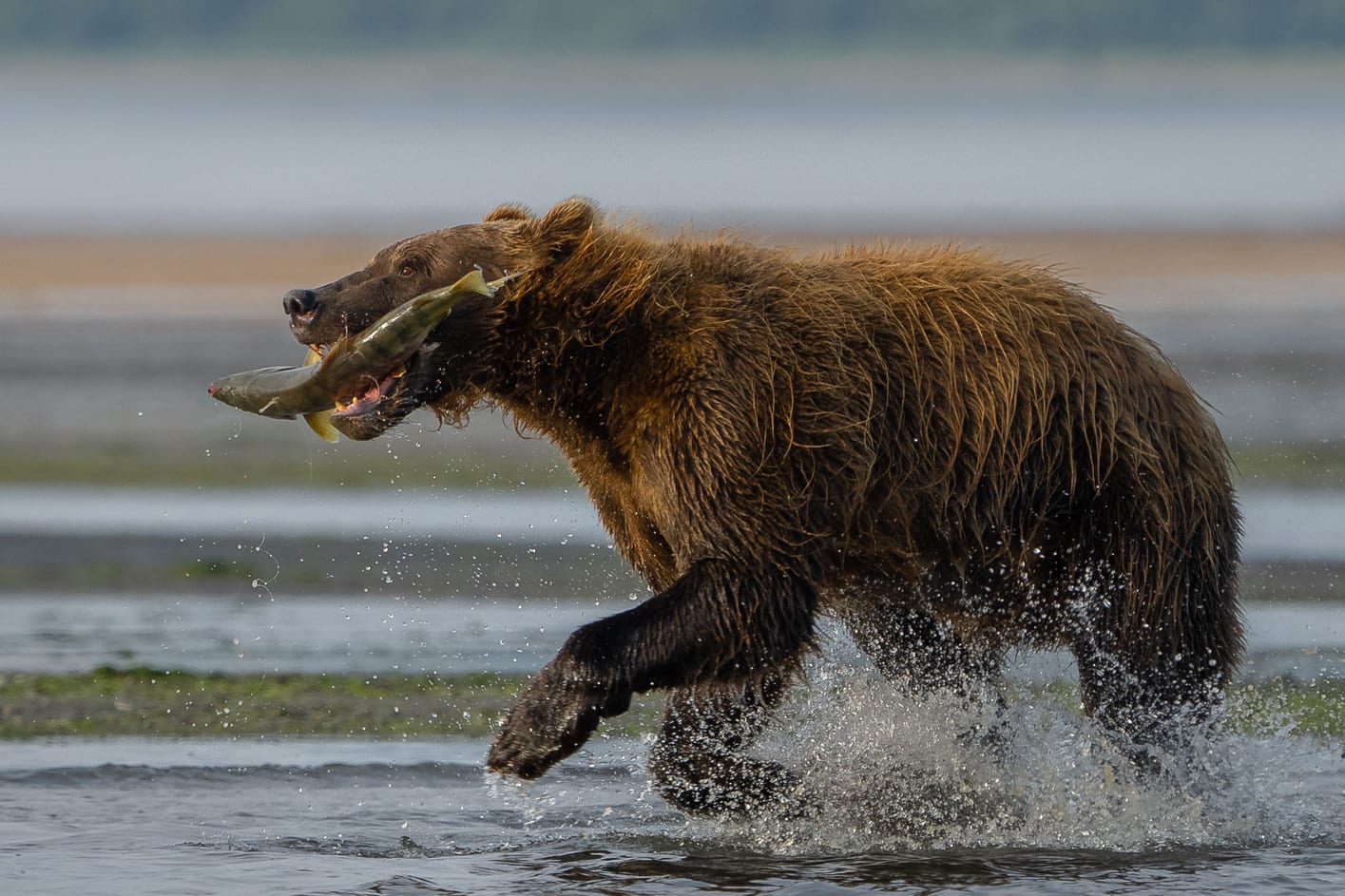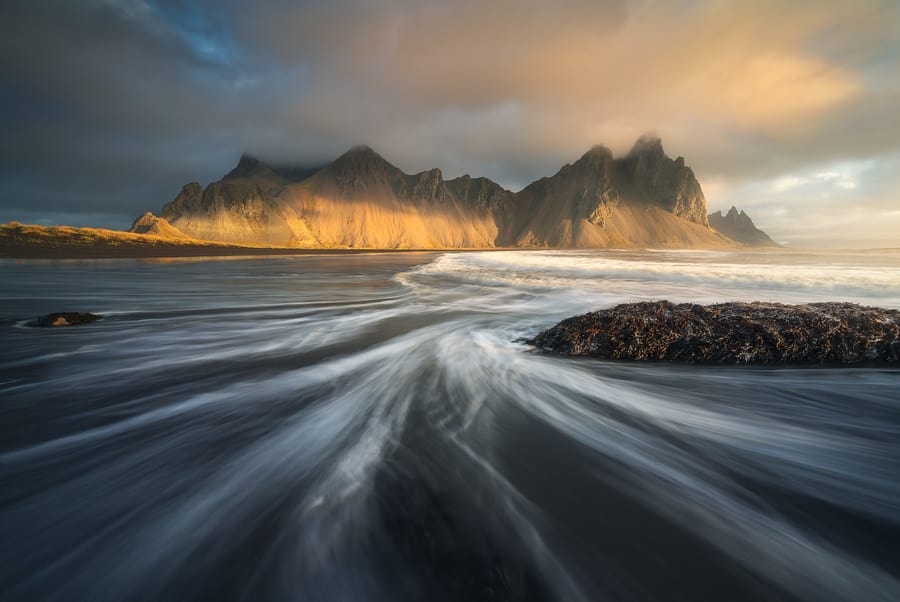2026 Peru photo tour
Peruvian Andes – Cordillera Blanca & Huayhuash
Join us for a Peru photo tour to capture the most breathtaking landscapes and night skies in the Andes Mountains. From giant, glaciated peaks; turquoise lakes; and endless valleys and vistas, to colorful wildflowers and some of the darkest skies on the planet, this region in Peru is home to some of the best natural wonders in the world.
We are running this Peruvian Andes photo trek from June 9th to 21st, 2026, during the dry season, when conditions are best for hiking, and chances are best for clear skies at night.
13 days and 12 nights.
2 photography guides.
(Single rooms)
- Pick-up and drop-off at Huaraz airport (ATA)
- Transportation during the trip in a private bus
- Accomodation in Huaraz in single rooms with private bathroom
- Acclimatization hikes
- Entrance ticket to Huascarán National Park
- Photography instruction from two professional photographers
- Pre-tour online meeting with the instructors to prepare and set goals
- Local mountain guides
- Starlink connection during the trek
- 8-day fully outfitted Huayhuash Photo trek (more infor below)
- Access to the Capture the Atlas Academy (more info below)
- Flights to/from Huaraz Airport (ATA)
- Accommodation before/after the trip
- Lunch or dinners in Huaraz
- Personal trekking/camera equipment
- Health/travel insurance
- Telephone, personal expenses, tips, etc. Any other service not mentioned in the "INCLUDED" section.

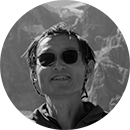
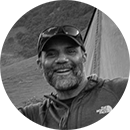
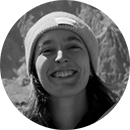


Photo Tour Overview
Our Peru photo trek will mainly focus on hiking and capturing the most iconic landscapes in the Cordillera Blanca & Huayhuash, the world’s highest tropical mountain ranges. This time of year is perfect for hiking, as it coincides with the dry season, and ideal for astro, as it’s the peak of Milky Way season in the Southern Hemisphere, with 10+ hours of Milky Way visibility at night.
Over 13 days, we will hike and photograph some of the most spectacular mountains, valleys, and “lagunas” in the Andes. In the Cordillera Blanca, we will visit the turquoise lakes of Laguna Churup and Laguna 69 and be surrounded by snow-capped peaks while we acclimatize ourselves to the high altitude. Once we are in Huayhuash, we’ll camp and hike every day, with vistas of 20,000+ foot towering, glaciated peaks, like the famous Yerupajá and Siula Grande, beautiful lagoons, such as Mitucocha and Carhuacocha, and breathtaking passes, like Trapecio and San Antonio.
At night, we will photograph our Milky Way arching over some otherworldly landscapes. Being at a high altitude and far away from sources of light pollution, you’ll see our galaxy like you’ve never seen it before and feel like you could literally touch the stars.
Huayhuash Photo Tour Highlights
- Photo tour from June 9th – June 21st, 2026
- Group size: 12 participants + 2 instructors + 2 licensed mountain guides.
- Main topics: Landscape and astrophotography – Mountains, lakes, Milky Way.
- Main areas: Cordillera Blanca & Huayhuash Mountain Ranges.
- Single accommodation included in hotels and private tents.
- Transportation included throughout the entire trip.
- All excursions included, such as the visits to Laguna Churup and Laguna 69.
- Fully outfitted Huayhuash trek with porters and everything included (more details below).
Official Peruvian Andes Photo Tour Brochure
Is this peru Photo Tour the right trip for me?
Before you continue reading, it’s important to note that this Peruvian Andes Photo Trek is strenuous and physically demanding. The tour involves 11 consecutive days of hiking, covering more than 60 miles in total. Daily hikes range from 3 to 9 miles, with elevation gains of up to 2,700 feet, at altitudes above 13,000 feet.
The weather in the Andes can be very unpredictable, so expect to face a wide variety of conditions. Half of the nights during the trip will be spent camping in tents at high elevations.
It doesn’t matter if you’ve never hiked at high altitudes before; we’ll ensure that you gradually become acclimatized. However, you should not consider this trek unless you are in excellent physical shape and mentally prepared for a challenging adventure of this kind.
Your efforts will be greatly rewarded with breathtaking views of one of the most spectacular high-altitude treks in the world, along with the opportunity to photograph the Milky Way in places where it has rarely been captured before.
*The maximum age to join this photo tour is 70 years old.
**All participants must complete a health questionnaire between 3 and 6 months prior to the start of the tour to ensure their health status is current.
***Participants aged 55 or older, or those with any pre-existing medical condition that could affect the safety of joining a multi-day high-altitude hiking tour, must obtain a physician’s approval through a medical evaluation.
2026 Cordillera Blanca & Huayhuash Photo Trek itinerary
Below is the itinerary of our Peruvian Andes Photo Tour. We have planned out every day, but bear in mind that some of the hikes and shoots might change depending on the weather conditions.
The dry season usually means clear days, but in the mountains, you can expect rain, sleet, and even snow at any time of the year.
We know the locations very well and have a team of local experts in the field to help us, so we’ll plan every shoot so that we have the best possible conditions and experience.
DAY 1: Peru Photo Tour – June 9th
Our Peruvian Andes photo adventure starts in Huaraz airport (ATA), where a private bus will take us to our hotel. Once there, we will check into our private accommodation, where we will stay the next four nights while we prepare for the hikes in Huayhuash.
On this first day, we will do the initial orientation and meet the rest of the participants before doing a camera gear review to make sure you are ready for the trip.
Huaraz is the capital of Peru’s Ancash region and at the heart of the Cordillera Blanca. Located at an altitude of more than 10,000 feet (3,000 meters), it’s the perfect place to acclimate ourselves before our photo trek.
Acclimatizing properly is key for adapting our bodies to the high altitudes of the Huayhuash circuit, so we’ll follow a specific plan to acclimatize ourselves. Every day, we will gradually increase our elevation before then sleeping at a lower elevation in Huaraz.
On this first day, we will also spend some time visiting Huaraz. We will walk around the city and visit the main landmarks, including the Plaza de Armas and Mercado Central, and have some delicious food in one of the local restaurants.
DAY 2: Peruvian Andes Photo Trek – June 10th
On the second day of our Peru photo tour, we will take the first of our three day-acclimatization hikes.
We will hike to Laguna Wilcacocha, the perfect hike to start with, since it’s located outside Huaraz at an altitude of just over 12,220 feet (3,725 meters), following an easy and gradual elevation gain.
Our private transportation will leave us at the beginning of the trail, where we’ll start the 3.9-mile hike to the top of the Wilcacocha Lagoon in the Cordillera Negra. Once at the top, we will enjoy some stunning views of the Cordillera Blanca, we’ll have a break for lunch, and take pictures of the peaks using our longer focal lengths.
During the trek, we will pass by some tiny villages, where we’ll have the opportunity to see Peruvian rural life. After this hike, we will arrive back in Huaraz where we’ll rest and then have a group dinner in one of the local restaurants.
1st acclimatization hike – Laguna Wilcacocha
- Distance: 3.9 miles (6.2 kilometers) round trip
- Elevation gain: 1,883 feet (573 meters)
- Max. altitude: 12,220 feet (3,725 meters)
- Estimated hiking time: 5 hours
DAY 3: Cordillera Blanca Photo Trek – June 11st
On day 3 of our Cordillera Blanca photo tour, we’ll take our second acclimatization hike to Laguna Churup.
Our private transportation will take us to the start of the Churup trail. The TheTaltitude and difficulty of the hike will increase compared to the day before, but after two nights of sleeping in Huaraz, our bodies will be better acclimatized for longer hikes.
Churup is an emerald-colored lagoon that is surrounded by snowy peaks and is located in Huascarán National Park. On this hike, we will see waterfalls, canyons, and exceptional views of one of the most beautiful locations in the Cordillera Blanca.
We will take our time to hike the 1.8-miles up to an altitude of 14,600 feet (4,450 meters), where the lagoon is located. Once there, we will have a break for eating lunch, taking pictures, flying drones, and enjoying the marvelous vistas before returning down to the start of the trail.
Once we are back in Huaraz, we will rest and then have dinner in another of the local restaurants.
2nd acclimatization hike – Laguna Churup
- Distance: 3.6 miles (5.8 kilometers) round trip
- Elevation gain: 2,142 feet (652 meters)
- Max. altitude: 14,600 feet (4,450 meters)
- Estimated hiking time: 6 hours and 30 minutes
DAY 4: Cordillera Blanca Photo Tour – June 12nd
On day 4 of our Peru photo tour, the last day of our acclimatization hikes, we will embark on one of the most special treks in the Cordillera Blanca: Laguna 69.
Laguna 69 is considered one of the most beautiful glacial lakes in the world. It’s located in Huascarán National Park, which is a UNESCO World Heritage Site that’s full of huge ravines, wildflowers, and the highest mountain in the Peruvian Andes (Mt. Huascarán).
This national park is located two and a half hours from Huaraz, so our transportation will pick us up at our accommodation at 4:30 AM so we can start the hike in the early morning.
After breakfasting in the area, we will start the spectacular photo trek to Laguna 69. The hike starts out mostly flat, but the elevation increases gradually as we get closer to the mountains. The trail is a feast for the senses and you can expect to see waterfalls, canyons, wildflowers, and massive mountains and glaciers.
Once we get to Laguna 69, we will take a break for pictures and aerial photography with drones. We will have an incredible view of the turquoise lagoon in a location surrounded by waterfalls, glaciated peaks, and the spectacular glaciers of Pisco and Chacraraju.
After our shoot, we will have some snacks before hiking back to a lower elevation.
We will get back to Huaraz, where we will get some rest before the next big adventure. At this point, we will be fit, acclimatized, and ready for our Huayhuash Astrophoto trek!
3rd acclimatization hike – Laguna 69
- Distance: 8.6 miles (13.8 kilometers) round trip
- Elevation gain: 2,762 feet (841 meters)
- Max. altitude: 15,092 feet (4,600 meters)
- Estimated hiking time: 7 hours
DAY 5: Huayhuash Photo Trek – June 13rd
On the 5th day of our Peru photo tour, we will start our Huayhuash photo trek. We will depart Huaraz after breakfast and take a relatively long drive (6 hours), which will allow us to enjoy great views of the incredible Huayhuash range from the road. Our final destination will be Llamac, a tiny village of farmers and shepherds, and the last human settlement we will see for the following 6 days.
Our local team of guides and porters will set up our camp near Llamac in Quartelhuain, where we will enjoy a delicious dinner in our dining tent. There will be no hiking on this day, since our goal will be to be well-rested for our Huayhuash photo trek.
If conditions allow, we will do an astrophotography session near the campsite.
Arrival at Huayhuash - Quatelhuain camp
- No hiking
- 6-hour drive from Huaraz approx.
- Campsite altitude: 13,670 feet (4,168 meters)
DAY 6: Huayhuas Photo Tour – June 14th
On the next day, we will start the real Huayhuash photo trek adventure by hiking our first section from Quartelhuain to Laguna Mitucocha via Cacanan Punta Pass.
We will reach our first mountain pass of the route early in the morning and get the first spectacular views of this mountain range from the top. From here, we’ll enjoy our first great vista of the snowy mountains of Rondoy and the Andean Condors overhead.
Once at the top, we will then descend down to our next camp near Laguna Mitucocha and stop for many photography breaks along the way. From our camp, we will have an excellent view of the giants Jirishanca, Rondoy, and Ninashanca, all glacier-capped mountains that are over 18,000 feet tall.
After resting at our camp at Janca, we will take the evening to visit the nearby Laguna Mitucocha and scout locations for our night shoot. There are many great Milky Way compositions to be found here in the early evening, so if conditions allow, we’ll do an early Milky Way session after dinner.
Quartelhuain to Laguna Mitucocha via Cacanan Punta Pass
- Distance: 5.6 miles (9 kilometers) round trip
- Elevation gain: 1,680 feet (512 meters)
- Max. altitude: 15,350 feet (4,680 meters)
- Campsite altitude: 13,917 feet (4,242 meters)
- Estimated hiking time: 5 to 6 hours
DAY 7: Huayhuash Photo Tour – June 15th
On Day 7, we will start the day by shooting the sunrise near Laguna Mitucocha. This is the best time of day, when the morning light illuminates the Rondoy and Jirishanca peaks, for good lighting at this location. After this shoot and a good breakfast, we’ll leave our camp to start hiking towards one of the most special spots on our Peru photo tour: Laguna Carhuacocha.
We will ascend the Carhuac Mountain Pass in the early morning and descend to the majestic Laguna Carhuacocha, where our local team will set up our camp for the next two days.
The views of the valley from this lagoon are unparalleled and you’ll feel very small as you face some of the highest mountains in the Andes, including Yerupajá (21,768 feet high/6,634 meters), Siula Grande, Yerupajá Chico, Jirishanca, and Rondoy.
During the day, you can see epic displays of light when the clouds roll around the peaks and feel the thunder of the avalanches falling off the mountain glaciers.
However, the real show at Carhuacocha starts at night, when this high-altitude valley gets so dark that you won’t be able to see your own hands. Be prepared because you’ll enjoy one of the most stunning night photography sessions of your life as you watch the Milky Way rise over the mountains with the light reflected in the lagoon.
This location is so special that we have reserved two nights here for exploring the area and making sure that we can enjoy the best possible conditions for astro.
Mitucocha to Laguna Carhuacocha via Carhuac Pass
- Distance: 6.8 miles (11 kilometers) round trip
- Elevation gain: 1,240 feet (378 meters)
- Max. altitude: 15,150 feet (4,620 meters)
- Campsite altitude: 13,622 ft (4,152 meters)
- Estimated hiking time: 5 to 6 hours
DAY 8: Huayhuash Photo Tour – June 16th
On the next day, we will explore the main photography landmarks around Laguna Carhuacocha.
After a sunrise shoot where we watch the alpenglow over the higher peaks, we will take the Huayhuash Alpine Route to another breathtaking vista in the Mirador de las 3 Lagunas ( Huayhuash Three Lagoons Viewpoint). After hiking the Carhuacocha valley, we will start gaining altitude while passing the three turquoise-colored lagoons of Gangrajanca, Siula, and Quesillococha.
The views of the mountains along the way are impressive, and it’s common to see the occasional avalanche falling off the cliffs. The last part of the hike is steep, but we will be rewarded with an exceptional panoramic view of the mountains from Pico Carnicero to Rondoy, with the impressive Eastern Siula Glacier and the three lagunas across the valley.
Beyond this viewpoint, we will take a couple of off-route, small hikes to different areas of the lagoon that nobody visits, so we’ll have the opportunity to capture unique camera and drone shots.
Once we are back at our base camp in Laguna Carhuacocha, we will do a second night photography session and photograph our Milky Way from a different perspective.
Day hike from Laguna Carhuacocha to Mirador Tres Lagunas
- Distance: 8.2 miles (13.9 kilometers) round trip
- Elevation gain: 1,738 feet (529 meters)
- Max. altitude: 14,747 feet (4,495 meters)
- Campsite altitude: 13,622 feet (4,152 meters)
- Estimated hiking time: 6 hours
DAY 9: Huayhuash Photo Tour – June 17th
On day 9, we will have a long day ahead of us, so we will depart in the early morning after a sunrise session and take the same Alpine Route up to the Mirador Tres Lagunas. Having an extra day here will allow us to enjoy this photogenic area in different light conditions .
After a break at the Three LLagoons Viewpoint that we visited the day before, we’ll continue climbing up to Siula Pass, the highest altitude of the trek so far. After this, we’ll start the descent to Laguna Carcinero and pass through areas where we will enjoy new views of the mountains. This area of the trek is very wild, so you can expect to see Andean condors and, if we are lucky, vicuñas (wild alpacas).
We will take a break in a lush valley with an excellent view of Pico Carnicero before starting our descent to Huayhuash Camp, where we will photograph the sunset and do our astrophotography sessions at night.
Note: *If you feel tired and don’t want to take this steep and scenic route, there will be an alternative hike via Carnicero Pass, which is easier and lower in elevation.
Carhuacocha to Huayhuash Camp via Siula Pass
- Distance: 8.6 miles (14 kilometers) round trip
- Elevation gain: 2,296 feet (700 meters)
- Max. altitude: 15,750 feet (4,800 meters)
- Campsite altitude: 14,240 feet (4,340 meters)
- Estimated hiking time: 8 hours
DAY 10: Huayhuash Photo Trek – June 18th
The 10th day of our Huayhuash astrophoto trek will offer another day of beauty at new heights!
The ascent on this trail is long, but it’s very gradual, so we will take our time until we reach the majestic Trapecio Pass. Here, you’ll barely believe your eyes when you see have the view, a 360°, up-close vista of towering mountains, glaciers, and lagoons.
Once at the top, we will take a break and then start an optional 200-foot hike to reach the highest point of the trek at almost 16,700 feet (5,100 meters), where we will see one of Huayhuash’s best-kept secret views.
After the pass, we will leave the moraine rock and hike down to Cuyoc, where we’ll walk through a very different type of terrain that descends into a fantasy-like valley with peaks and glacial lakes.
The final destination will be Elefante Camp, where we will rest before our night photography session in the valley.
Huayhuash to Elefante Camp via Trapecio Pass
- Distance: 5.1 miles (8.2 kilometers) round trip
- Elevation gain: 2,362 feet (720 meters)
- Max. altitude: 16,732 feet (5,100 meters)
- Campsite altitude: 14,270 feet (4,350 meters)
- Estimated hiking time: 8 hours
DAY 11: Huayhuash Photo Trek – June 19th
On this new day of our Peruvian Andes photo tour, we will start with a sunrise session around Elefante Camp and rest in preparation for a very short but steep hike to San Antonio Pass for sunset where, if the weather cooperates, we’ll be able to enjoy possibly the most epic vista in the entire Huayhuash range.
During the day our mountain guides will prepare a farewell barbeque for us, as this will be our last sunset with them.
After lunch and before sunset, we’ll start the steep hike to San Antonio Pass. From the top of San Antonio, you can get a perfect view of the highest mountains in the Huayhuash range, including Siula Grande, Yerupajá, and Carnicero, and the turquoise lagoons of Jurau and Sarapococha. Another highlight from this height is seeing the Siula Glacier Valley, where Joe Simpson’s harrowing fall and survival, as dramatized in Touching the Void, occurred.
Once we are back at Elefante Camp, we will rest and get ready for one last Milky Way photography session if the weather allows it.
Elefante to San Antonio Pass
- Distance: 2.7 miles (4.5 kilometers) round trip
- Elevation gain: 1,673 feet (510 meters)
- Max. altitude: 16,469 feet (5,020 meters)
- Campsite altitude: 13,976 feet (4,260 meters)
- Estimated hiking time: 5 to 6 hours
DAY 12: Huayhuash Photo Trek – June 20th
On the last day of our Huayhuash photo tour, we will return to the “human world” in a descent hike to Huayllapa Village.
We will take our last photos along the way, passing by wildflowers, rivers, and some waterfalls.
Once in Huayllapa, our private transportation will drive us back to Huaraz, which will take 8 hours. Once we are back, we will enjoy a great shower and sleep in a bed again after our Huayhuash photo trek!
Elefante to Huayllapa
- Distance: 8.2 miles (13.2 kilometers) one way.
- Elevation gain: 200 feet (60 meters)
- Max. altitude: 13,976 feet (4,260 meters)
- Estimated hiking time: 4 to 5 hours
- 8-hour drive to Huaraz approx.
DAY 13: Peru Photo Tour – June 21st
On our last morning in Huaraz, our private bus will take us back to the airport in the morning.
The flight to Lima from Huaraz takes a little under an hour. If you depart from Lima on the same day, consider booking your return flights for the late afternoon or later.
Price: $5,390 USD
Deposit: $2,000 USD
A $2,000 USD deposit is required to reserve your spot for this workshop. You can also pay in full at any time. The remaining balance is due 120 days before the start of the tour. If the remaining balance is not paid in full by the due date, you will lose your spot.
What does the price include?
Included
- Transfer by private bus from and to Huaraz airport (ATA)
- Transportation included during the entire trip
- 5 nights of lodging in Huaraz in single rooms with bathroom
- Acclimatization hikes to Wilcacocha, Churup, and Laguna 69
- Entrance ticket to Huascarán National Park
- Starlink connection during the trek
- Photo guide services from Dan Zafra, professional landscape and astrophotographer
- Pre-tour online meeting with the instructors to prepare and set goals
8-day fully outfitted Huayhuash Photo trek, including: (Click to display)
-Private 4-season tent with sleeping bag and air mats.
-All food and drinks – breakfast, picnic, lunch, dinner.
-Bilingual, accredited professional mountain guide.
–Assistant guide.
–Cook & kitchen services.
–Kitchen assistant.
–Donkey drivers (“arrieros”) with mules.
–Dining tent.
-Portable power generator.
–Satellite phone and first aid kit.
–Rescue horse.
-Huayhuash communities camping fees.
–Night photography sessions.
*Bonus
- Access to Dan Zafra’s full Capture the Milky Way & Benro Polaris Course (valued at $349).
- Access to David Aguilar’s Moody Landscapes course
Not included
- Flights to/from Huaraz airport (ATA).
- Accommodation before/after the trip.
- Meals before/after the Huayhuash trek except breakfast (E.g., meals in Huaraz).
- Personal trekking/camera equipment.
- Health/travel insurance (We can help you purchase the best travel insurance according to your needs).
- Telephone, personal expenses, tips, etc., and any other service not mentioned in the “INCLUDED” section.
Upcoming Huayhuash Photo Tour dates






What will I learn during this Peru Photo Tour?
This Peruvian Andes photo tour is mainly focused on landscape and astrophotography, and shooting mountains and high alpine scenes.
What you learn during the workshop will vary according to your goals and skills. Your instructors are professional photographers with extensive experience who will help you take your photography to the next level.
This tour is technically demanding, considering the environment and the type of scenes that we’ll be shooting, so we do recommend having a good photography knowledge base to make the most of the experience.
During the tour you’ll have the opportunity to learn:
Basic photography techniques
- Getting comfortable shooting different types of landscapes and photos in manual mode
- Adjusting to the best camera settings in each situation
- Familiarizing yourself with the basics of night and Milky Way photography
- Enhancing your compositions with the best techniques
- Designing your own shooting workflow to be more effective in the field
- Photographing daytime and night panoramas
Advanced photography techniques
- Creating powerful compositions that tell a story and engage the viewer.
- Building a connection between your photography and your vision.
- Becoming a master of light: learn how to enhance it and keep it under control.
- Advanced landscape techniques like bracketing, focus stacking, or focal length blending.
- Advanced night photography techniques like stacking and tracking.
- Advanced drone photography like aerial panoramas, vertoramas, and bracketing.
Post-processing techniques
Some of the post-processing techniques that you can learn with the included tutorials are:
- Basics of Lightroom and Photoshop.
- Preparing your images in Lightroom/Adobe Camera Raw.
- Stitching of panoramas using different software like Lightroom or PTGui Pro.
- Reducing noise in your images using AI-powered denoising software.
- Enhancing image sharpness with AI-based sharpening tools.
- All types of Blendings (exposure, focal length, focus, etc.).
- Light shaping and Dodge & Burn in your landscape & night images.
- Post-processing of moody and atmospheric landscapes.
- Advanced Milky Way post-processing techniques.
Your instructors on Peruvian Andes photo tour
Francesco Dall’Olmo will be the tour leader and he’ll make sure that you capture the best possible images during this trip.
Francesco is a landscape, Astro, and professional time-lapse photographer. He is also an expert in Huayhuash and the Peruvian Andes, where he has traveled and run Capture the Atlas Astrophotography tours over the last years.
He has traveled all over the world to photograph the night skies, capturing breathtaking images in Atacama, Patagonia, and all over Europe. He has also helped multiple photographers improve their skills in countless photography tours and workshops.
Francesco will show you how to best capture the landscapes of Huayhuash, from the basics to advanced techniques like star-tracking, stacking, star reduction, focus stacking, panoramas, and other landscape and night photography tips.
Nacho Fernandez will be your photography co-leader and instructor, ensuring you achieve the best results from your landscape and astrophotography sessions. He will guide you through composition, technique, and post-processing, helping you refine your skills in capturing breathtaking Astro and landscape images.
A dedicated astrophotographer, Nacho has spent years mastering advanced editing techniques. As a passionate educator, he leads international photography tours with Capture the Atlas and offers personalized 1-on-1 editing coaching to help photographers elevate their post-processing skills.
Beyond photography, Nacho is committed to creating a welcoming and supportive learning environment. His experience leading teams and working with people ensures an engaging atmosphere where photographers can experiment, grow, and push their creative boundaries.
What to bring on this Peruvian Andes Photo Trek
Photography Gear
- DSLR/mirrorless camera and a sturdy light tripod.
- A quality all-round zoom lens like a 24-105 mm.
- A wide-angle lens, such as a 14-24 mm lens.
- A camera bag to transport all your equipment.
- A headlamp for the night shoots.
These are some optional items: (weight is an important consideration for the hikes)
- A medium zoom lens, such as a 24-70 mm lens.
- A telephoto lens, like a 100-400 mm lens.
- A CPL (circular polarizer filter).
Other optional items if you are focused on advanced MW photography are:
- A star-tracker.
- A laser for doing polar alignment.
*I also recommend a light and fast prime lens for Milky Way photography. Some of the best lenses in this range are:
- 20 mm f/1.8
- 24 mm f/1.4
- 35 mm f/1.4
This prime can also be a substitute for your wide-angle zoom for daytime images.
Clothing and Trekking Gear
We are taking this Peru photo trek during the dry season, also known as the “Andean summer.” This time of year typically has stable weather, with only one or two days of bad weather per week and sometimes even weeks of perfect weather.
The average temperature in the high mountains above 13,000 feet (4,000 meters) at this time of year is 68°F (20ºC) in the middle of the day and drops to below freezing at night and in the early mornings. This is also the time of year with very little wind.
However, we will be hiking around very high mountains, and the weather in this type of environment can be unpredictable, so there could be rain, hail, snow, or strong winds during parts of the trek.
For this reason, you should come prepared and wear the right clothing and trekking gear. Below is our list of basic recommendations for this Huayhuash photo trek:
- A system of top layers to wear (base layer, fleece, windproof layer, shell).
- A system of bottom layers to wear (hiking pants, fleece pants for the cold nights, overpants for the rain).
- A good pair of breathable boots to keep your feet warm and protect your ankles while hiking.
- Light sneakers or sandals so you can change your shoes after the trek.
- Warm and breathable socks.
- A wool hat, neck gaiter, and gloves.
- A day backpack (30/40 Lt).
- Light water bottle.
- A small, light towel.
Some optional items that are highly recommended are:
- Hiking poles.
- A cap or sun hat.
- Sunglasses.
- Lip balm.
- An external power bank.
- A portable solar charger.
- An oxygen saturation monitor.
You will receive a list with everything that you need and we recommendwith links and examples before the trip.
Money
The currency in Peru is the Peruvian Sol (PEN). In many places in Lima and Huaraz, you can pay with credit or debit card, but there are still many businesses that only take cash.
We recommend getting “soles” in your home country, or withdrawing some once you are in Peru. You can always purchase a small amount at Jorge Chavez International Airport to tide you over until you get to an ATM.
Documentation
People from most countries in the Americas, Europe, Eastern Asia, Israel, Australia, and New Zealand don’t need a tourist visa to visit Peru for trips that are shorter than 183 days.
Please check if you need a visa to visit Peru if you live outside those areas. We can help you with this process.
Other important information
Accommodation
The accommodation on this Peruvian Andes photo tour is single occupancy throughout the entire trip:
- In Huaraz, you’ll have a private room and bathroom. We’ll be staying in a hotel that’s very close to the Plaza de Armas and the main attractions and restaurants in town.
- During the Huayhuash trek, you’ll have a private tent, which will be set up every day by the local team. We will camp at the official campsites, where you can take in stunning views of the most photogenic mountains in the Andes.
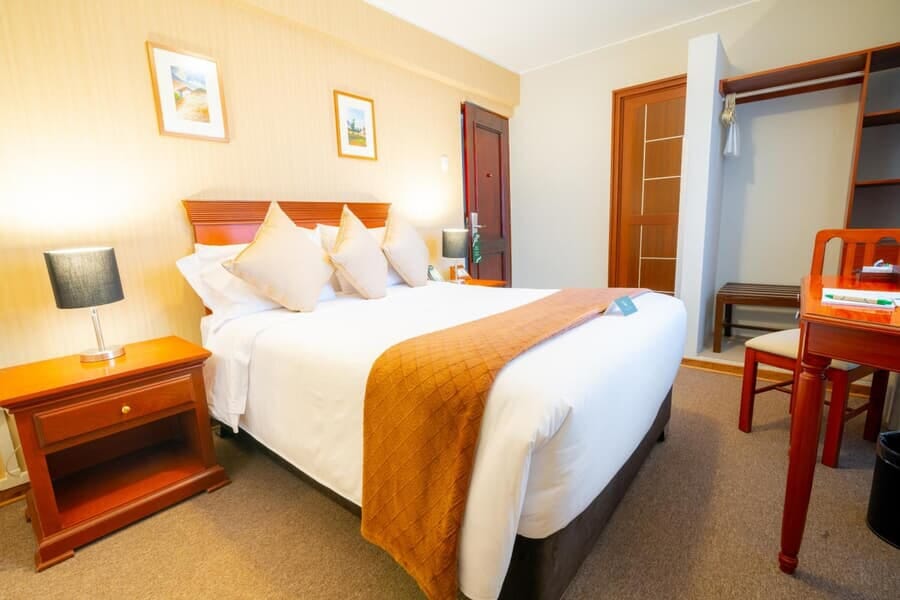

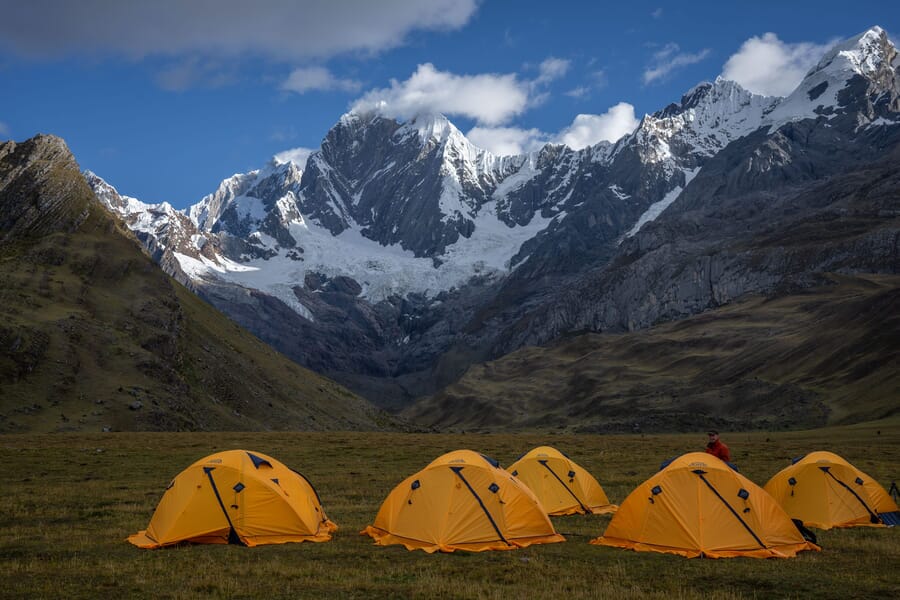
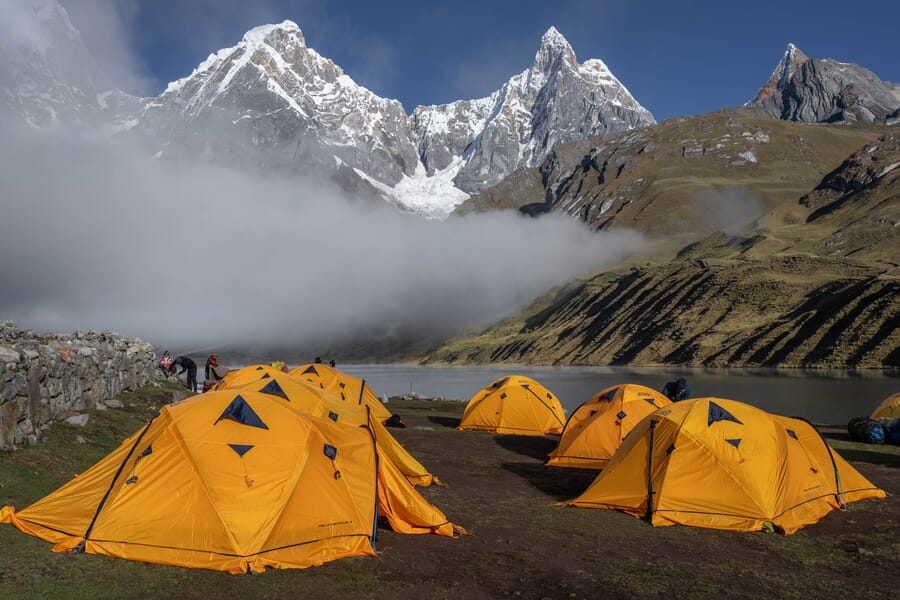
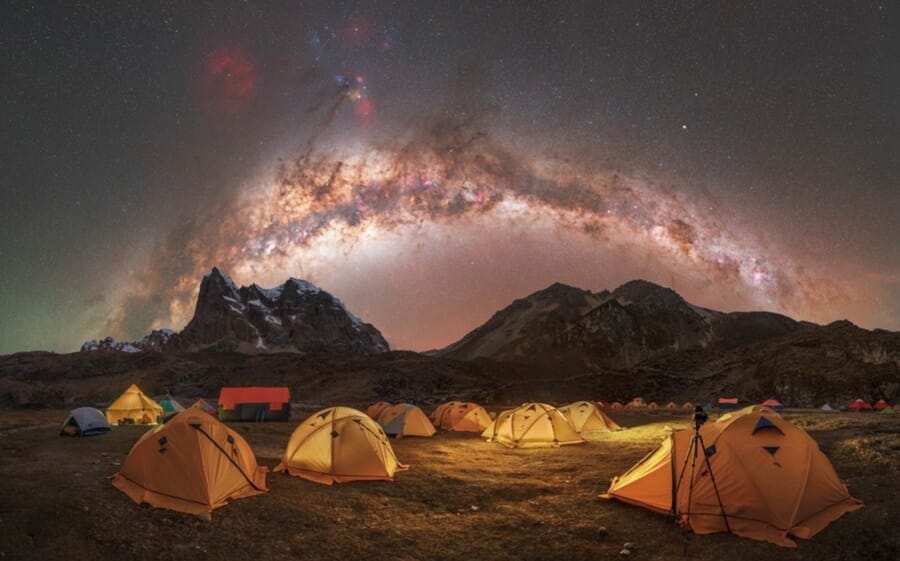
Meals
All meals are included during our Huayhuash photo trek and they’ll be prepared and served to us in a group dining tent.
We’ll have a local team of experts with us, including a cook and a kitchen assistant that will prepare all our meals.
- Breakfast options will include a mix of hot drinks, omelettes, pancakes, cereals, fruits, toast, and jams.
- Lunch will be eaten during breaks from the hikes and will include salad, pasta, potatoes, tuna, trout, chicken, beef, vegetables, and fruits.
- Dinner will be the main meal of the day to recover after the hikes, and the cook will prepare a variety of local and international dishes.
Apart from the main meals, you can also have hot drinks, dried fruits, and snacks at any time of the day.
We can cater to all dietary requirements, including vegetarian, vegan, gluten-free, and many other options.
Transportation
Transportation is included during the photo tour. We will travel in a comfortable bus for the long trips, and we’ll use a small bus for the day hikes and the hike to Laguna 69.
Hiking & altitude
During this Peruvian Andes photo tour, we will be hiking almost every day an average of 3 to 9 miles, with a 2,700-foot elevation gain on average, and at an altitude of over 13,000 feet. If you join this photo tour, you have to be mentally and physically prepared for this kind of adventure.
Being physically fit is extremely important to be able to complete all the hikes on this tour; however, you don’t need to have extensive experience hiking at high altitudes since we’ll take the necessary steps toward proper acclimatization to minimize the risk of altitude sickness.
You can find a summary of all the hikes of this Peruvian Andes photo tour in the following table.
Note: All distances and durations listed below are the totals to complete the hike, not just one way.
Hike | Elevation Gain | Distance (round trip) | Estimated Duration (roun trip) | Path |
|---|---|---|---|---|
Laguna Wilcacocha | 1,883 feet (573 meters) | 3.9 miles (6.2 kilometers) | 5 hours | 1st acclimatization hike. Reaching a max altitude of 12,220 feet (3,725 meters) |
Laguna Churup | 2,142 feet (652 meters) | 3.6 miles (5.8 kilometers) | 6 & 1/2 hours | 2nd acclimatization hike. Reaching a max altitude of 14,600 feet (4,450 meters) |
Laguna 69 | 2,762 feet (841 meters) | 8.6 miles (13.8 kilometers) | 7 hours | 3rd acclimatization hike. Reaching a max altitude of 15,092 feet (4,600 meters) |
Quartelhuain to Laguna Mitucocha | 1,680 feet (512 meters) | 5.6 miles (9 kilometers) | 5-6 hours | Max altitude reached: 15,350 feet (4,680 meters). Laguna mitucocha through Punta Pass |
Mitucocha to Laguna Carhuacocha | 1,240 feet (378 meters) | 6.8 miles (11 kilometers) | 5-6 hours | Max altitude reached: 15,150 feet (4,620 meters). Laguna Carhuacocha through Carhuac Pass. |
Laguna Carhuacocha to Mirador Tres Lagunas | 1,738 feet (529 meters) | 8.2 miles (13.9 kilometers) | 6 hours | Max altitude reached: 14,747 feet (4,495 meters) |
Carhuacocha to Huayhuash Camp | 2,296 feet (700 meters) | 8.6 miles (14 kilometers) | 8 hours | Max altitude reached: 15,750 feet (4,800 meters) |
Huayhuash to Elefante Camp | 2,362 feet (720 meters) | 5.1 miles (8.2 kilometers) | 8 hours | Max altitude reached: 16,732 feet (5,100 meters) |
Elefante to San Antonio Pass | 1,673 feet (510 meters) | 2.7 miles (4.5 kilometers) | 5-6 hours | Max altitude reached: 15,750 feet (4,800 meters) |
Elefante to Huayllapa | 200 feet (60 meters) | 8.2 miles (13.2 kilometers) one way | 4-5 hours. One way | Max altitude reached: 13,976 feet (4,260 meters) |
We recommend being in good physical shape to enjoy this experience |
||||
Important Health & Fitness Requirements
Participation in the Peruvian Andes Photo Tour requires a high level of physical fitness, mental preparation, and commitment to safety.
All participants must complete a health questionnaire between three and six months prior to the start of the tour to ensure their medical status is current. Participants aged 55 years or older, or those with pre-existing medical conditions, must obtain a physician’s approval through a comprehensive medical evaluation before being allowed to join.
As part of the acclimatization process, every participant is required to complete three mandatory acclimatization hikes—Laguna Wilcacocha, Laguna Churup, and Laguna 69—before beginning the Huayhuash section of the tour. To be considered successful, these hikes must be completed within a reasonable time frame and without external assistance carrying your backpack or personal gear. Participants unable to meet these conditions will not be permitted to continue into the Huayhuash portion of the itinerary, and no refund will be provided.
A typical day on our Huayhuash Photo Trek
We are very close to the equator, and the hours of light don’t change much throughout the year, so we’ll get 12 hours of light from about 06:00 AM to 06:00 PM. We will plan all the hikes and photography sessions according to the hours of light and Milky Way visibility.
If there is no late Milky Way session, we will wake up early around 06:00 AM. Our local team will have breakfast ready for us, so we can enjoy it and start our hike. We won’t have to worry about setting up camp, since that will also be done by the local team.
We will hike for about 4 hours in the morning, doing multiple photography stops according to the landscapes and light. After this, we will take a break and have lunch outdoors with a scenic view.
After the break, we will continue our hike. Some days are shorter or longer than others, but we’ll hike an average of 3-4 hours after the lunch break, stopping again for multiple photo opportunities.
Once we arrive at our destination, camp will be already set up so we can rest and have some dinner. If there are good conditions for astro, we’ll do an early Milky Way session after dinner before going to bed and recharging our batteries for the following day.
The night photography sessions will vary according to the weather conditions and locations. There are usually 10+ hours of Milky Way visibility at this time of year, but our galaxy is too high to see for most of the night. The best time for Milky Way photography in the Southern Hemisphere at this time of year is right after sunset and before sunrise, when the Milky Way arch is rising or setting. Some locations are better for a rising Milky Way, while others are better for a setting Milky Way, which is how we will determine our shoots.
What expenses should you consider for this Peru photo tour?
Flights
The main airport servicing Huaraz is Comandante FAP Germán Arias Graziani Airport (ATA). This is a regional airport and can only be reached from Lima’s Jorge Chavez International Airport (LIM).
The price of round-trip flights to Lima from the US is approximately $500-600 USD, and from Europe, it’s $600-700 USD. From Lima to Huaraz, it is an additional $100-$150.
We recommend reading this article if you want to find the best flights to Lima Airport from your current location.
You can also reach Huaraz by bus from Lima. We recommend the company Cruz del Sur. This option is cheaper but it takes between 8-9 hours.
Meals
Meals in Huaraz are not included, except for breakfast at the hotel. Most days, we will have breakfast at the hotel and lunch/dinner in one of the local restaurants.
During the day, we will eat snacks and sandwiches to maximize our time during the acclimatization hikes.
Groceries and restaurants are cheap in Peru, and you can expect to spend about $15-$25 USD on food per day.
Personal Satellite Phone and Starlink
We will carry a Garmin InReach device during the trek for weather updates and emergency communication.
In addition, we will have a Starlink device available to provide internet access along the route. Please note that even with Starlink, coverage in the Peruvian Andes will be limited. The connection is intended primarily for basic communication with family and friends back home.
What makes this Peru Photo Tour unique?
Our workshops are completely centered on photography: finding the best lighting conditions during the trip and creating an intensive experience that is conducive to learning and taking the best images.
Our workshops are limited to small groups with a ratio of no more than six students per instructor. This is also an important factor for providing the attentive instruction you need during the tour.
During this workshop, we will photograph the famous locations in this destination as well as some hidden gems that we have discovered while exploring in the past that are rarely visited or photographed.
We will discuss your goals before the tour so we can create a dedicated instruction plan for you. It doesn’t matter what your age is or your skills are; we will design your plan and provide you with materials before, during, and after the workshop so the learning process is not limited to just the tour.
We have spent years designing national and international photo tours with successful results, helping photographers with everything from the simple task of getting off Auto to the ambitious goal of capturing complex images.
Beyond the photography, our photography workshops help build strong bonds that last forever. After our trip, you’ll feel like you have been with a group of friends rather than on a standard tour. We are thankful to have plenty of repeat clients who keep traveling and learning with us.
Frequent asked questions about our Peruvian Andes photo tour
What level of photography knowledge should I have to attend this photo tour to the Peruvian Andes?
Whether you are experienced or just starting out in photography, you are welcome, and I am convinced that you will progress quickly. Together, we will send you home with a thorough knowledge of many photography areas from the basics to multiple advanced techniques.
Once you sign up for the trip, we will discuss your skills and goals for this tour, and I’ll organize a teaching plan so you can make the most of this experience. You’ll also receive access to Dan’s Capture the Milky Way course so you can start preparing your astrophotography before the trip.
What physical shape do I need to be in?
This is a STRENUOUS photo trek, taking place at high altitudes and across rugged mountain terrain.
On most days, you can expect to hike 4 to 8 hours to reach a mountain pass at elevations of over 14,500 feet (4,500 meters), all while carrying your camera gear, water, and personal essentials.
The trek does not involve technical mountaineering; you will not need to climb ridges, traverse avalanche terrain, or use ropes. However, trails can be rocky, steep, and occasionally slippery, so having good balance, endurance, and confidence on uneven ground is important.
No prior experience hiking at high elevations is required, since we have prepared a progressive acclimatization plan to help participants adapt safely and reduce the risk of altitude sickness. That said, you must have prior hiking experience and be in excellent physical condition to handle the daily demands of this adventure. We are happy to provide training recommendations in advance to ensure you are fully prepared.
If you need to, before confirming your participation, we will arrange a personal call to review your background, hiking experience, and goals, and to confirm together whether this trek is the right fit for you.
Am I too young/old for this Peru photo tour?
There is an age limit to join this photo tour, which is 70 years old.
All participants are required to complete a health questionnaire within three to six months prior to the start of the tour to ensure that their health status is current and accurately reflects their ability to participate in a physically demanding high-altitude adventure. In addition, participants who are aged fifty-five or older, or those who have any pre-existing medical condition that could compromise their safety on a multi-day high-altitude hiking tour, must obtain a physician’s approval through a comprehensive medical evaluation before joining.
Can my non-photographer companion join us on the tour?
Non-photographer companions are welcome to join the tour, and they need to book a spot under the same price and conditions as any other participant. (We don’t allow non-participant companions tagging along with the group). We have had plenty of non-photographer companions over the years and all of them enjoyed an amazing experience. As long as they enjoy nature, beautiful landscapes, and are a bit patient with the schedules of a photo tour, joining the trip can be a great experience regardless of the shooting.
Can I bring my drone?
The Peruvian Andes offer exceptional opportunities for aerial photography and filming. You’ll be in very remote areas with almost no restrictions and you’ll have the opportunity to charge your drone batteries with our portable power generator.
Both tour leaders are experienced drone pilots who can help you with your aerial photography.
Our Happy Students!
We have had the opportunity to work with and help countless photographers over the last years:



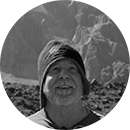



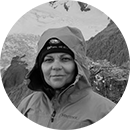
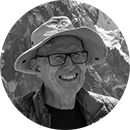
Terms and conditions
This tour is governed by these Terms and Conditions.
The following health and fitness requirements are part of these Terms and Conditions and are particularly relevant to the Peruvian Andes Photo Tour.
Each participant is solely responsible for evaluating their physical capabilities and arriving adequately prepared for the demands of this trek. Capture the Atlas cannot be held liable for any injuries, health complications, or dissatisfaction resulting from a participant’s failure to meet the stated requirements.
If a participant’s physical condition presents a risk to themselves, fellow participants, or the guides, Capture the Atlas reserves the right to require that the participant curtail or discontinue their participation. In such cases, no refund will be issued, and all additional costs—including flight changes, accommodations, medical treatment, or rescue services—will remain the sole responsibility of the participant.
By agreeing to these terms and conditions, participants confirm that they understand the physical demands, accept full responsibility for their own health and safety, and acknowledge that failure to comply may result in exclusion from the tour without refund or compensation.
The “Cordillera Blanca” and Huayhuash are the most spectacular and photogenic mountain ranges in the Peruvian Andes.
The hikes in this region are considered some of the most beautiful alpine treks in the world for good reason; here, you can see everything from endless mountains to colorful glacial lakes and some of the darkest night skies on our planet.
This is the only tour where you’ll find hiking, intense astrophotography, camaraderie, and unforgettable moments in a breathtaking place like the Andes.
Are you ready for the adventure?!
You’ve probably seen Capture the Atlas in…






